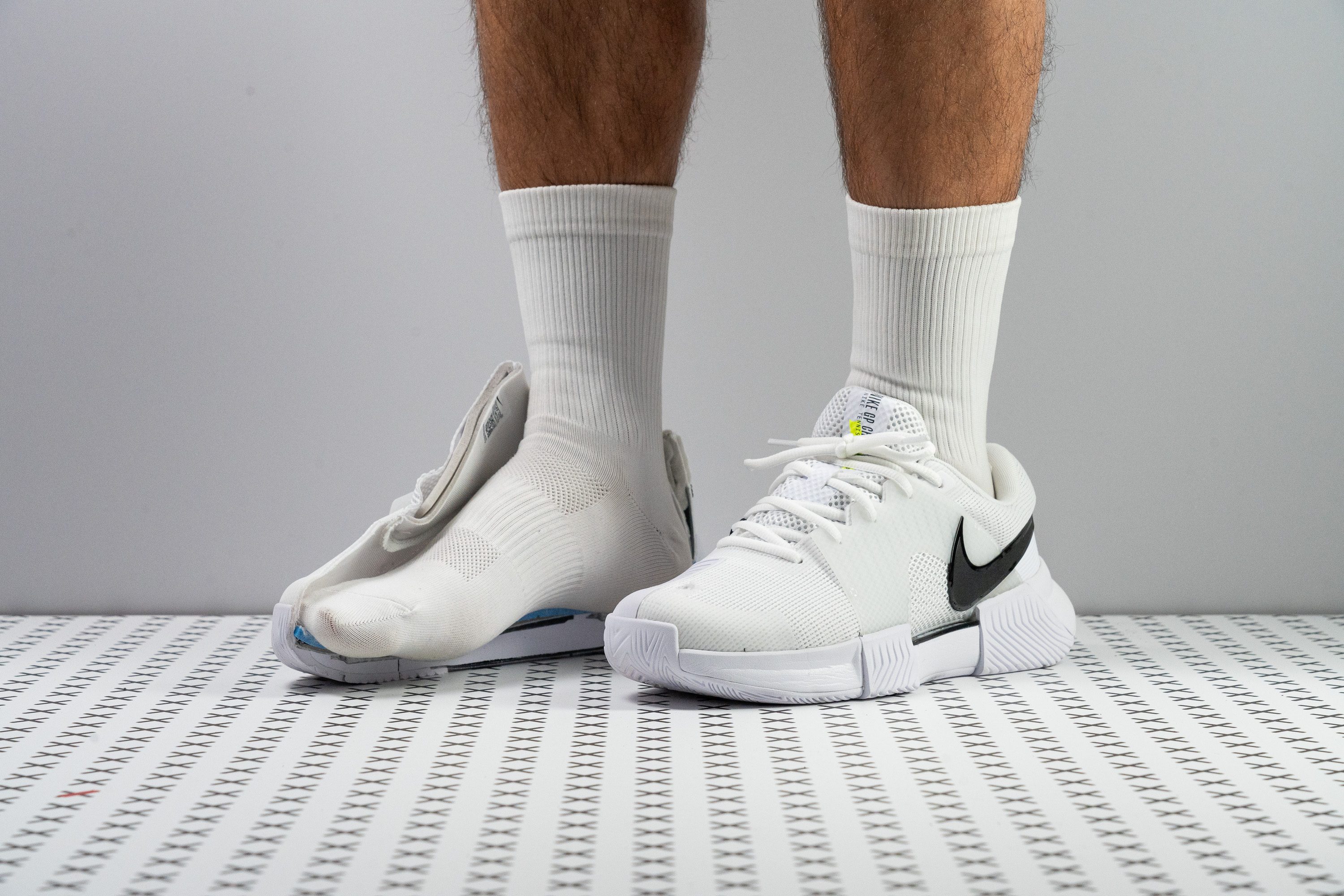Our verdict
- Top pick in best hard court tennis shoes
- Top pick in best Nike tennis shoes
Pros
- Excellent lateral support and stability
- Highly responsive and bouncy cushioning
- Great impact protection
- Stiff shank adds lots of propulsiveness
- Rockered heel makes heel-to-toes smoother
- Very durable and thick outsole
- Cosy step-in feel
- Strong grip on hard court
Cons
- Heavier than average
- Not enough protection for toe drags
- A bit fiddly tongue
Audience verdict
Comparison
The most similar tennis shoes compared
+ + Add a shoe | |||||
|---|---|---|---|---|---|
| Audience score | 83 Good! | 88 Great! | 91 Superb! | 89 Great! | |
| Price | £135 | £150 | £135 | £100 | |
| Shoe type | All CourtHard Court | All CourtHard Court | All CourtHard Court | All CourtHard Court | |
| Shock absorption | Moderate | Moderate | Low | Moderate | |
| Energy return | Moderate | Low | Low | Moderate | |
| Traction | Moderate | High | Moderate | Moderate | |
| Construction | Stability | Stability | Stability | Stability | |
| Breathability | Moderate | Moderate | Moderate | Moderate | |
| Weight lab | 14.7 oz / 417g | 13.9 oz / 394g | 13.9 oz / 393g | 14 oz / 397g | |
| Drop lab | 7.5 mm | 11.3 mm | 10.9 mm | 6.3 mm | |
| Width / fit | Wide | Medium | Medium | Medium | |
| Toebox width | Medium | Medium | Narrow | Narrow | |
| Size | Half size small | True to size | True to size | Slightly small | |
| Midsole softness | Firm | Balanced | Firm | Firm | |
| Stiffness | Moderate | Moderate | Moderate | Stiff | |
| Torsional rigidity | Stiff | Stiff | Stiff | Moderate | |
| Heel counter stiffness | Moderate | Stiff | Stiff | Moderate | |
| Midsole width - forefoot | Average | Wide | Average | Wide | |
| Midsole width - heel | Average | Wide | Average | Wide | |
| Outsole durability | Good | Decent | Good | Good | |
| Heel padding durability | Decent | Decent | Bad | Decent | |
| Heel stack lab | 30.0 mm | 28.4 mm | 32.5 mm | 29.7 mm | |
| Forefoot | 22.5 mm | 17.1 mm | 21.6 mm | 23.4 mm | |
| Insole thickness | Average | Thick | Average | Average | |
| Removable insole | ✓ | ✓ | ✓ | ✓ | |
| Heel tab | None | Extended heel collar | None | None | |
| Toebox durability | Decent | Decent | Good | Decent | |
| Outsole hardness | Average | Average | Average | Average | |
| Outsole thickness | Average | Very thin | Average | Thin | |
| Ranking | #26 Bottom 33% | #11 Top 29% | #3 Top 8% | #7 Top 18% | |
| Popularity | #15 Top 39% | #8 Top 21% | #1 Top 3% | #11 Top 29% |
Who should buy
Having thoroughly tested the Nike Zoom GP Challenge 1, we believe that it will accommodate the following folks:
- seasoned players looking for a stable tennis shoe to dominate the baseline
- fans of Nike's bouncy Zoom Air units (there are two of them here!)
- athletes who prefer very stiff and propulsive tennis shoes
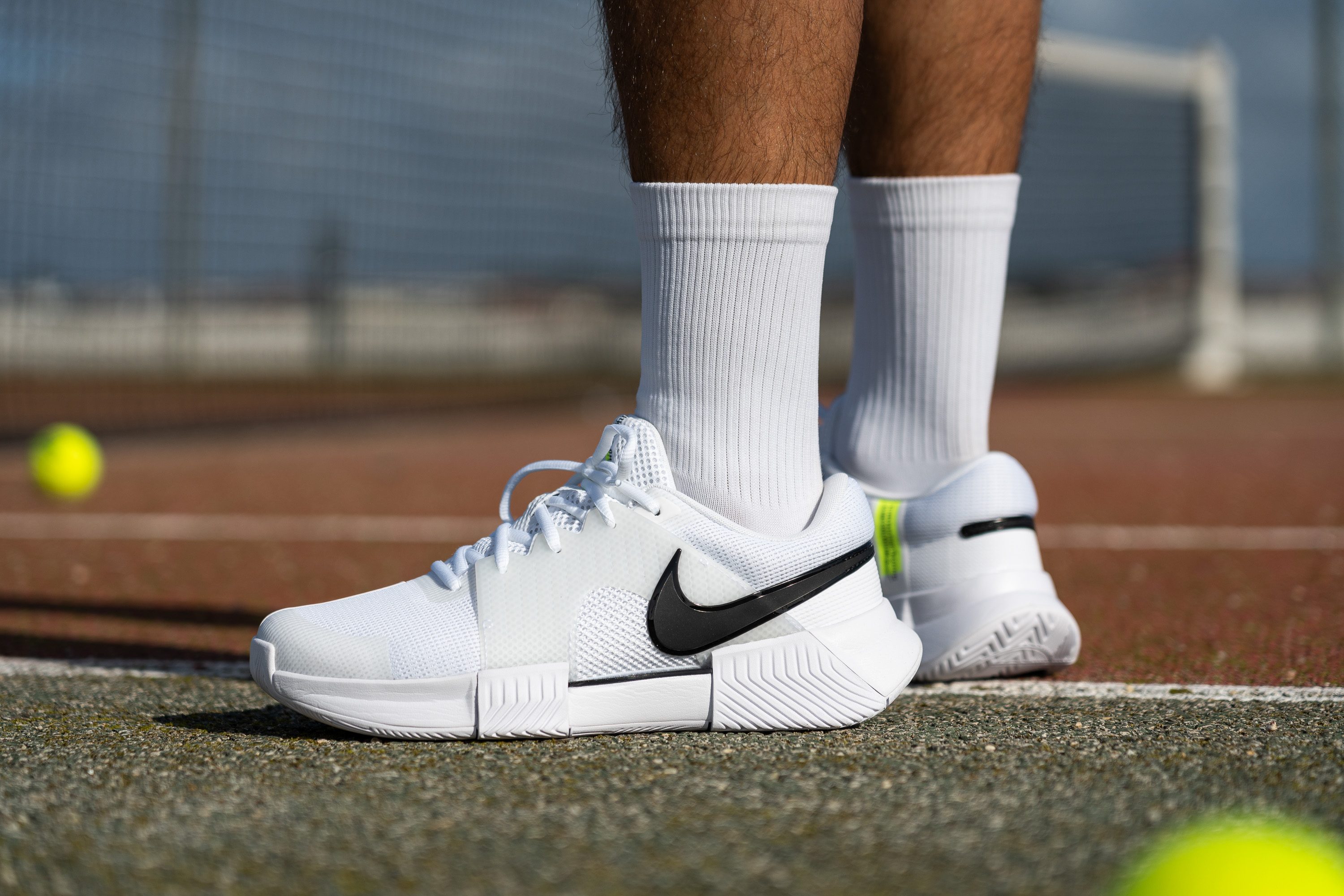
Who should NOT buy
If you are someone who burns through tennis shoes with constant scrapes, slashes, and quick-drag movements, you may need a more reinforced option. We highly recommend the ASICS Gel Resolution 9 and the ASICS Court FF 3 for their unparalleled upper durability.
And if you want a lighter Nike shoe that would be more grounded and speed-oriented, the Vapour 11 is your best bet.
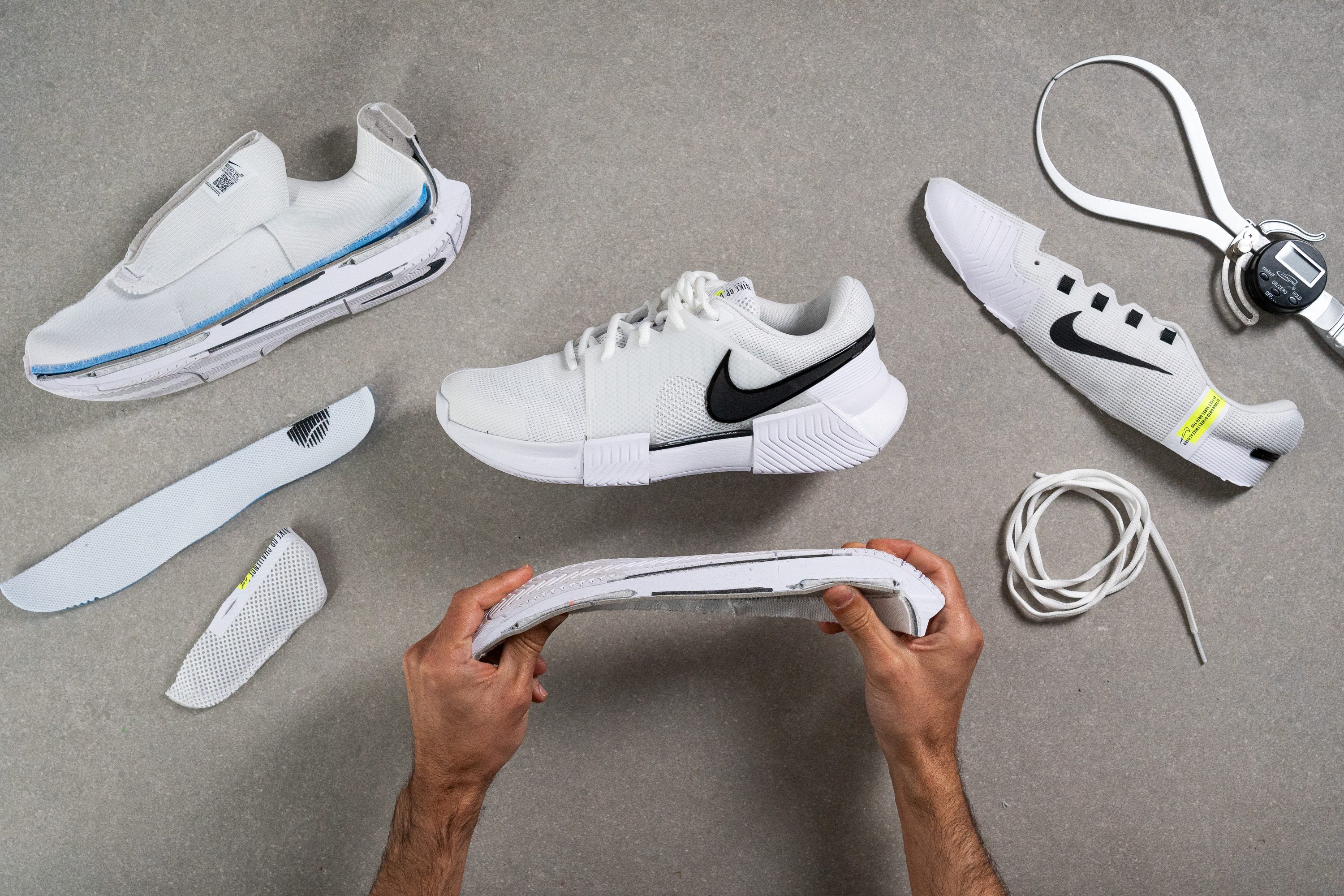
Cushioning
Shock absorption
The GP Challenge 1 offers a standard amount of shock absorption in the heel (95 SA), but it is significantly better cushioned than the average tennis shoe in the forefoot (79 SA).
A large Zoom Air unit under the ball of the foot not only adds stack height and bounce to the ride but also takes on a great deal of impact, keeping the toes and toe joints well protected.
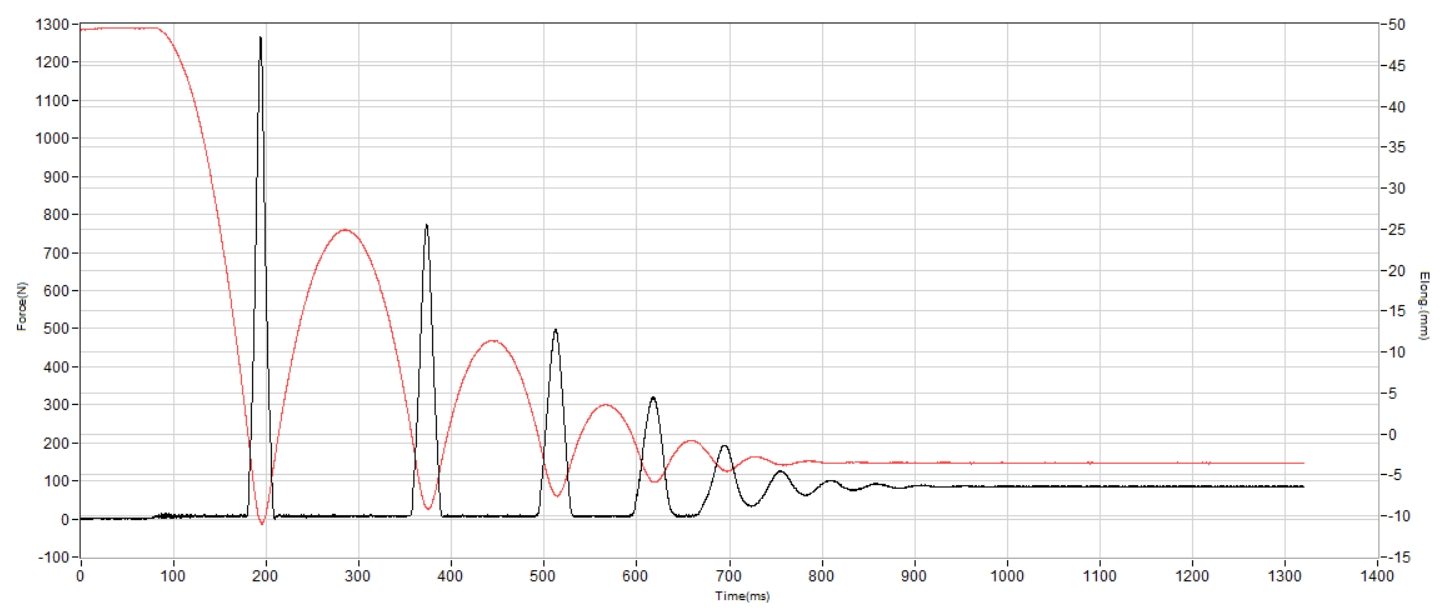
| Zoom GP Challenge 1 | 95 SA |
| Average | 99 SA |
Energy return
The Nike GP Challenge 1 offers next-level cushioning with two large Zoom Air units inside its midsole. This is what makes it different from the cheaper GP Challenge Pro, by the way. That shoe only has one Zoom unit in the heel.
Thanks to these Zoom units, the GP Challenge 1 feels exceptionally bouncy and fun to play in. It showed above-average energy return in both the heel (51.7%) and the forefoot (56.2%), making us feel rather quick on our feet. Split steps and hard dashes to the net all felt charged and fast.
| Zoom GP Challenge 1 | 51.7% |
| Average | 48.8% |
Heel stack
The Nike GP Challenge 1 offers plenty of cushioning to rely on. Measuring its stack height in the heel, our calliper showed 30.0 mm.
This is on par with other cushioning-oriented tennis shoes that we've tested.
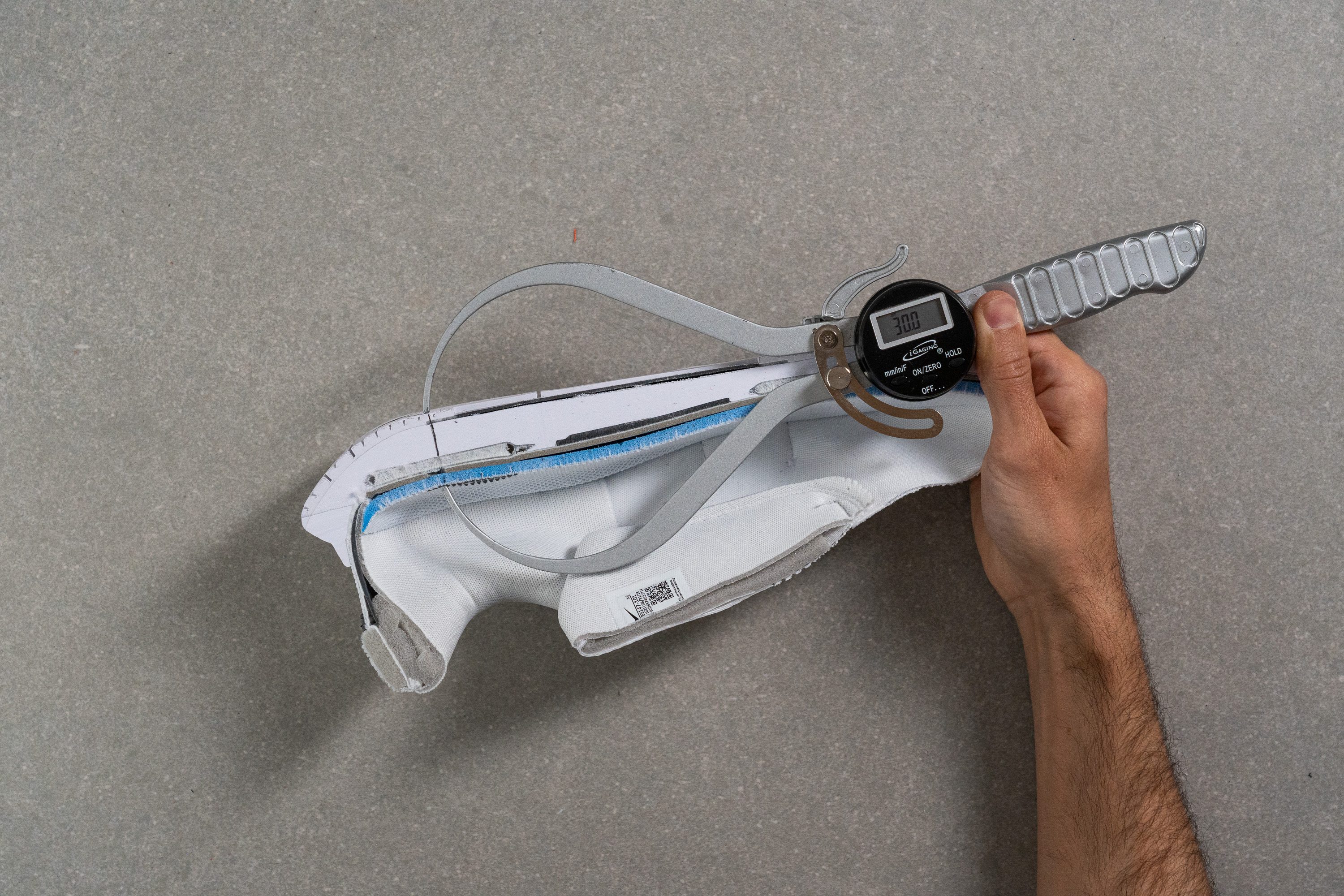
| Zoom GP Challenge 1 | 30.0 mm |
| Average | 29.2 mm |
Forefoot stack
The shoe's forefoot stack also happens to be thicker than average at 22.5 mm. There is very little court feel in this Nike shoe. It is more about bounce and impact protection.
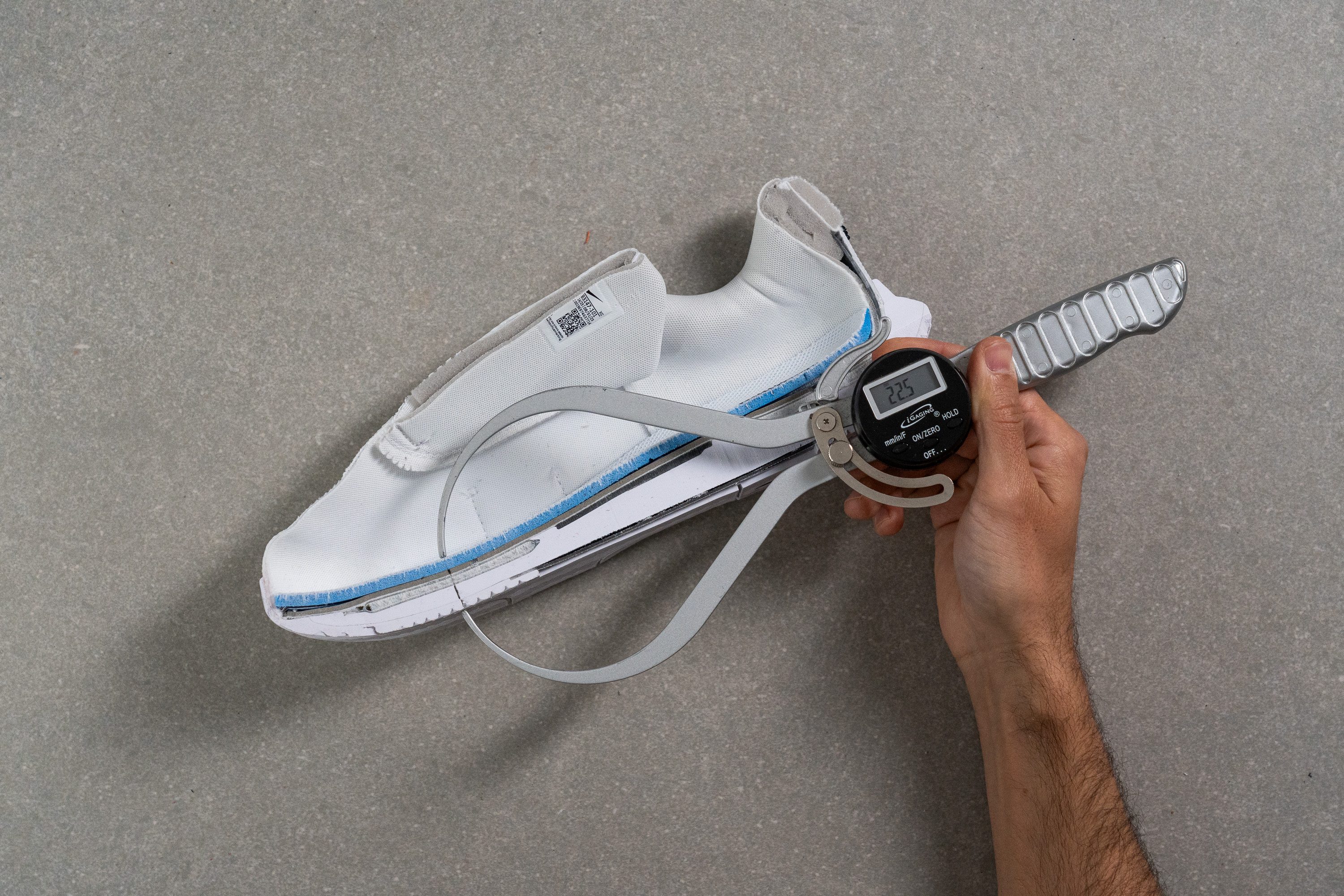
| Zoom GP Challenge 1 | 22.5 mm |
| Average | 19.5 mm |
Drop
The GP Challenge 1 has a moderate heel-to-toe drop of 7.5 mm. This is a little lower than average but most likely won't make a difference for the majority of players.
It is a perfect balance between heel support and feeling stable on top of the shoe. We experienced no toe jamming at all.

| Zoom GP Challenge 1 | 7.5 mm |
| Average | 9.7 mm |
Midsole softness
The shoe's primary cushioning is made of a full-length Phylon foam. We are surprised with this choice, to be honest, as this foam is normally used in the brand's cheaper shoes given its rather basic feel.
It is also a firmer type of foam which is confirmed by our durometer measurement. The tool returned 30.2 HA which is harder than 50% of tennis shoes in our catalogue.

| Zoom GP Challenge 1 | 30.2 HA |
| Average | 28.1 HA |
Size and fit
Size
Nike Zoom GP Challenge 1 fits half size small (44 votes).
Consider sizing up
Width / Fit
According to Nike, the GP Challenge 1 is built on a new last which is by far the widest in the brand's tennis shoe lineup. And we are happy to confirm that!
Equipped with a gel mould of the shoe's interiors and a digital calliper, we measured the widest area of the shoe's toebox at 96.0 mm. This is notably wider than the average!
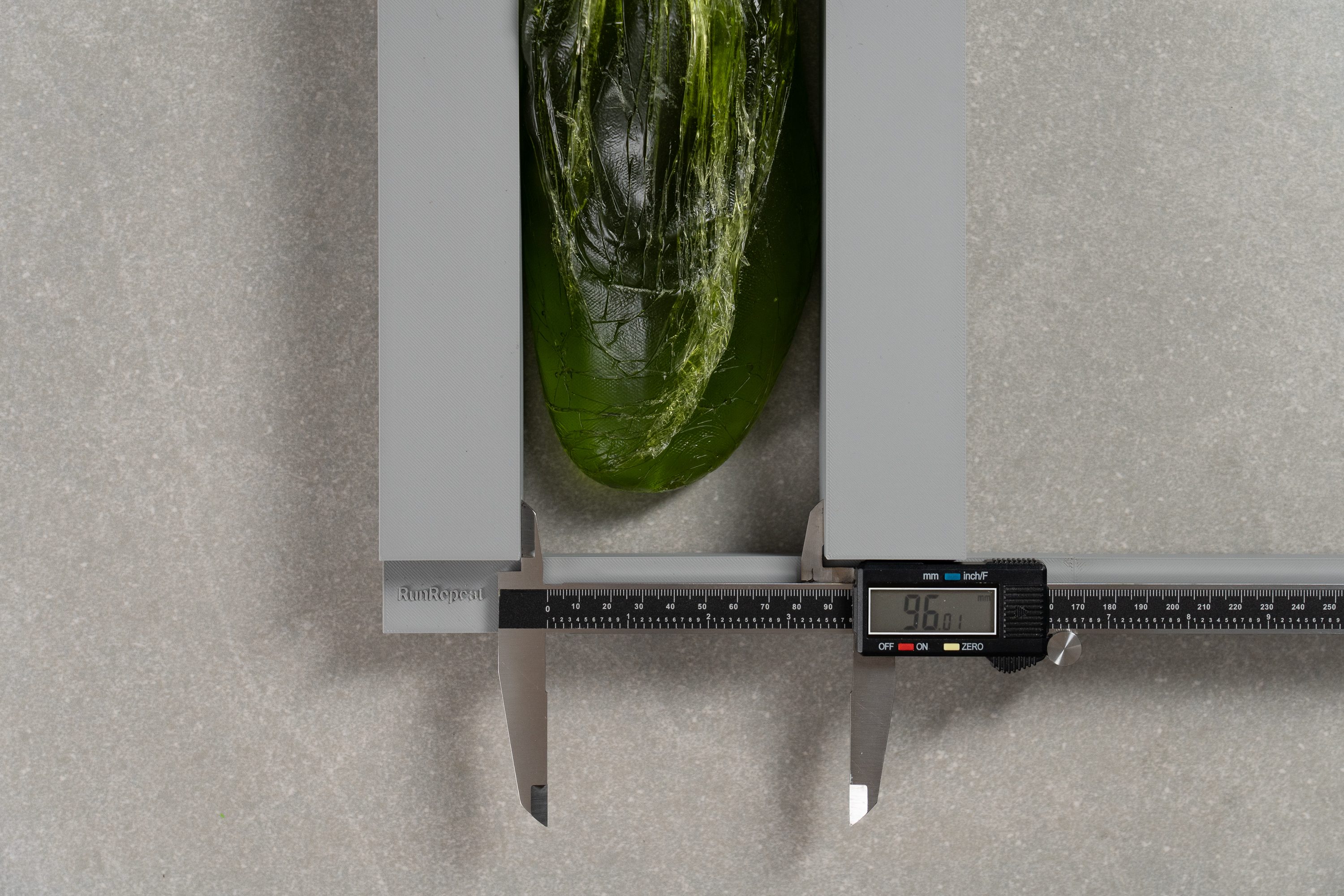
| Zoom GP Challenge 1 | 96.0 mm |
| Average | 92.9 mm |
Toebox width
The shoe's rounded toebox shape also contributes to the accommodating fit. It showed a proper medium-with reading of 70.3 mm which indicates a non-pointy and non-restricting fit.
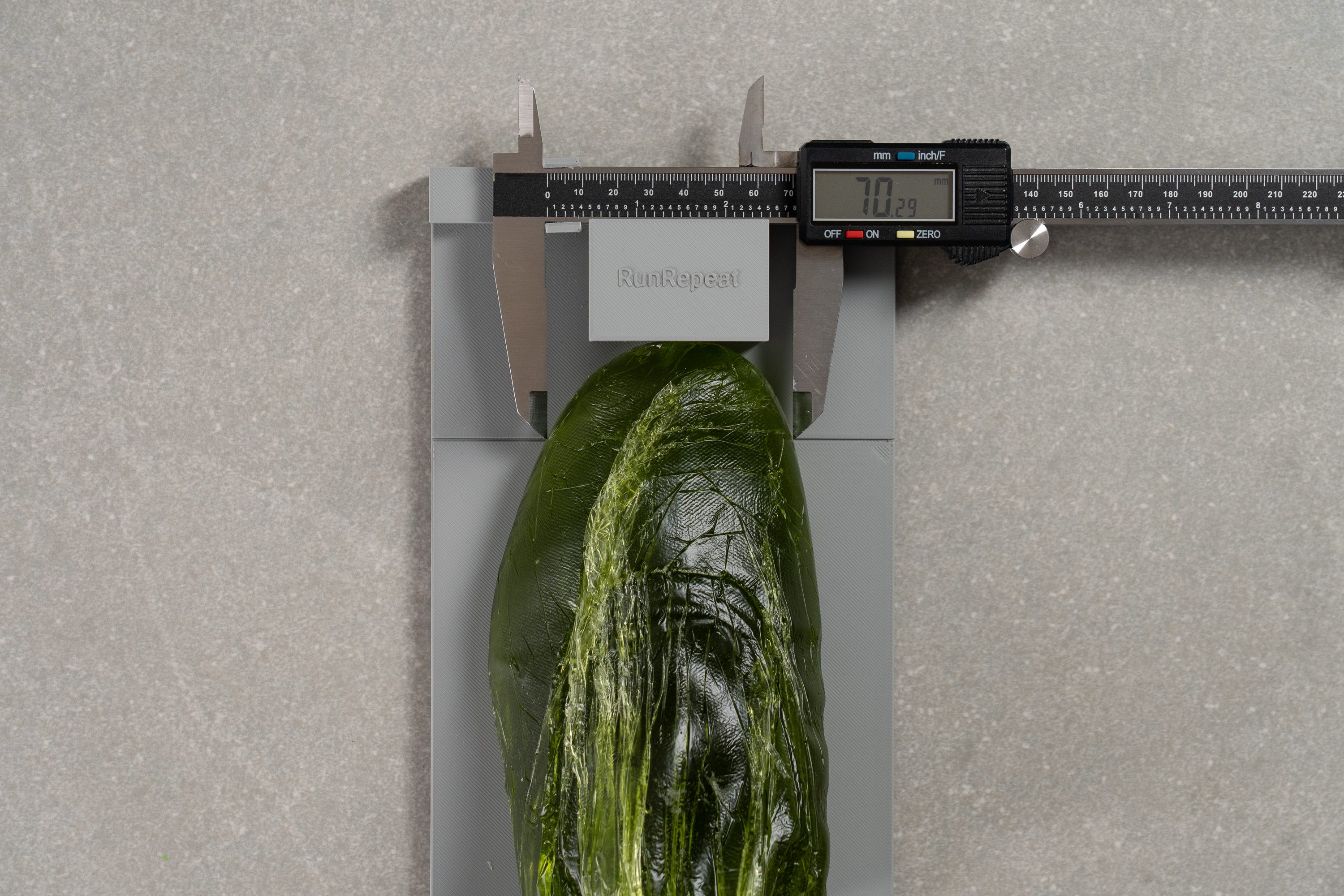
| Zoom GP Challenge 1 | 70.3 mm |
| Average | 69.2 mm |
Toebox height
What's more, the toebox height of this Nike shoe exceeds the average too! With a whopping calliper reading of 29.2 mm, it is one of the tallest toeboxes in our roster.

| Zoom GP Challenge 1 | 29.2 mm |
| Average | 25.1 mm |
Traction / Grip
The Nike Zoom GP Challenge 1 features a herringbone pattern that gets wider and shallower on the medial side but is narrower and toothier on the lateral side.
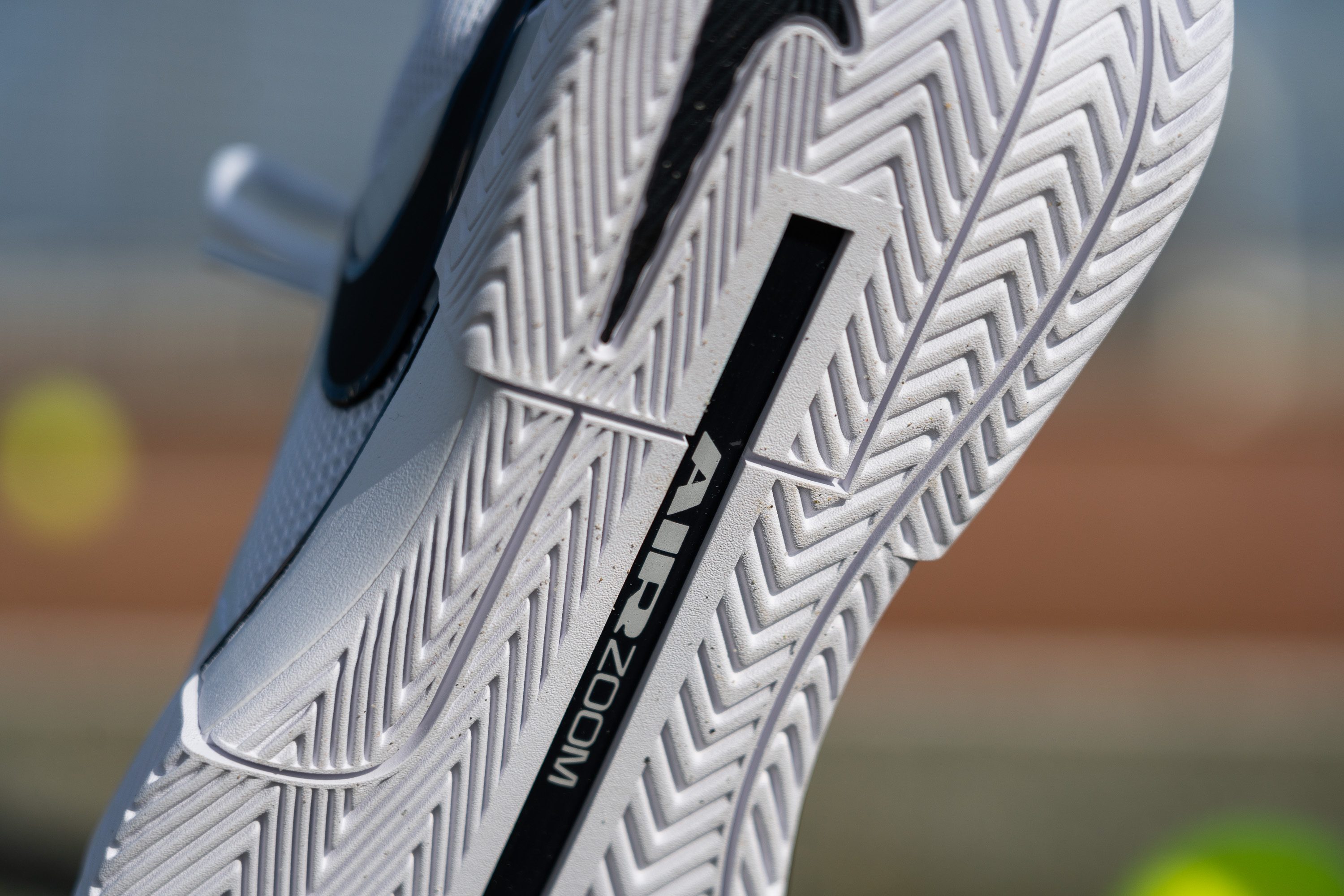
We found that this combination works wonders on the court. It bit the ground hard when we needed to stop on a sixpence but also allowed us to slide when coming out of a shot.
It should be noted, however, that the shoe's grip is initially very strong and you get a better give after breaking the shoe in for a few sessions.
Forefoot traction
Measuring the forefoot grip of this Nike tennis shoe in our controlled lab test returned a solid friction score of 0.81. This translates into a predictable and consistent bite on hard court.
Please note that the shoe's grip is initially very strong, but you get a better give after breaking the shoe in for a few sessions.
| Zoom GP Challenge 1 | 0.81 |
| Average | 0.76 |
Outsole design
The Nike Zoom GP Challenge 1 features a herringbone pattern that gets wider and shallower on the medial side but is narrower and toothier on the lateral side.
We found that this combination works wonders on the court. It bit the ground hard when we needed to stop on a sixpence, but also allowed us to slide when coming out of a shot.
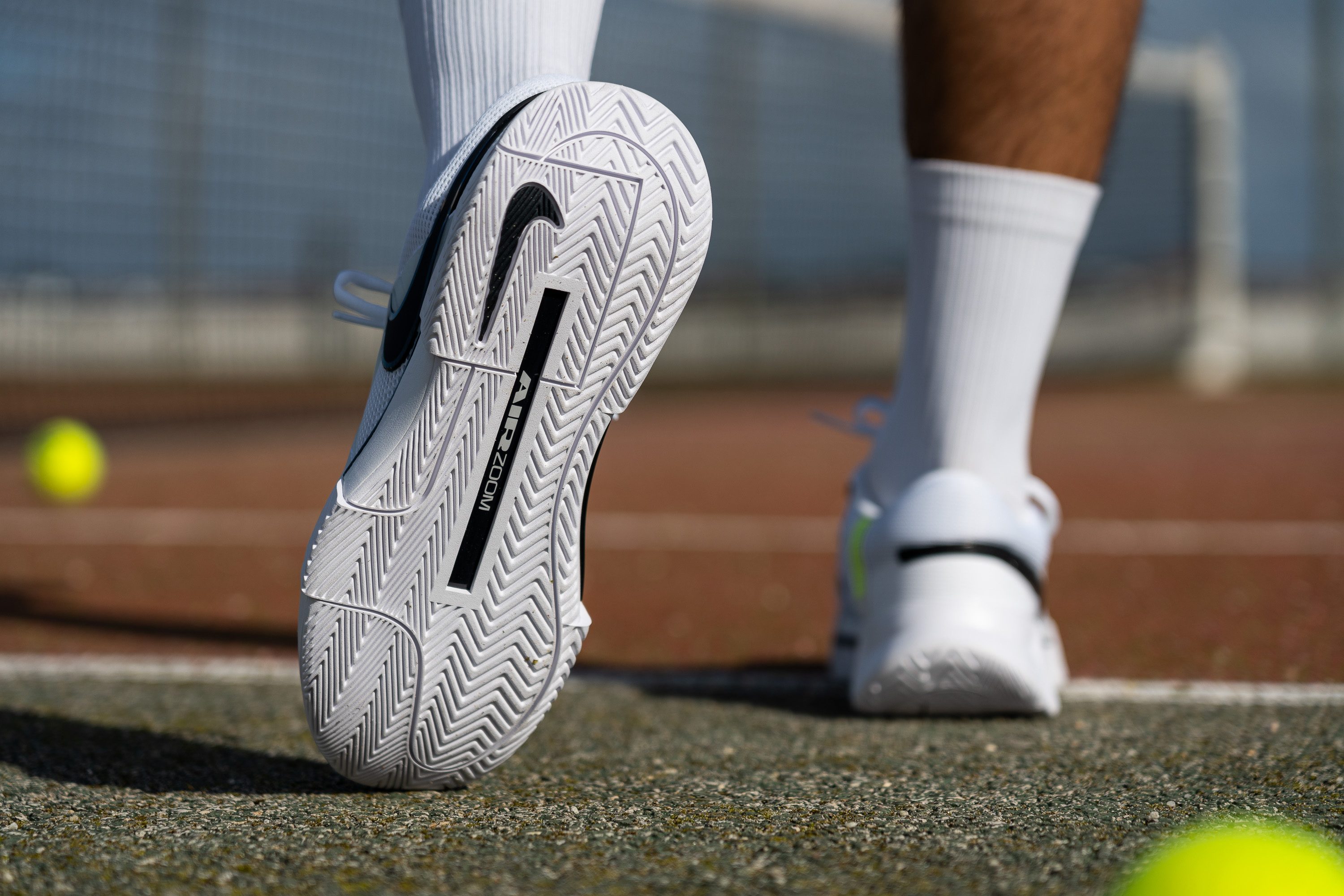
Flexibility / Stiffness
Even after hours of breaking in, this Nike shoe remains a stiff one. With its wide shank, it's not that easy to bend your foot naturally in the GP Challenge 1.
To put a number of it, we measured how much force it takes to bend this Nike shoe to a 30-degree angle on a shoe flexing tester. According to the machine, it took 19.8N which is notably more than it takes an average tennis shoe.
What's the benefit of it? You get an amazingly propulsive ride that feels like you're jumping off a springboard at the swimming pool!
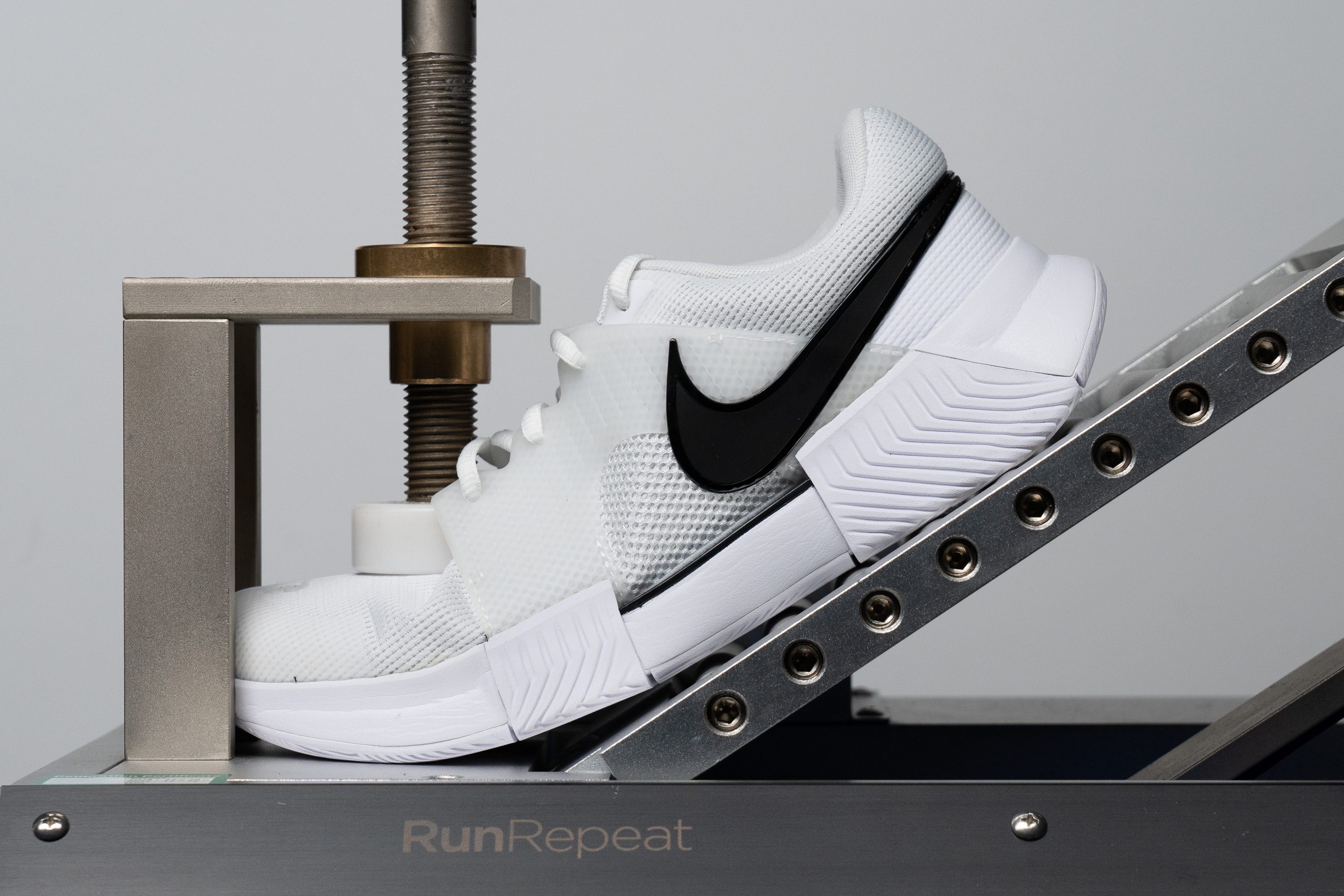
| Zoom GP Challenge 1 | 19.8N |
| Average | 16.6N |
Weight
Here is one major drawback of the GP Challenge 1 - it is one of the heaviest tennis shoes we've ever tested! A whale on the scale, based on the industry standards.
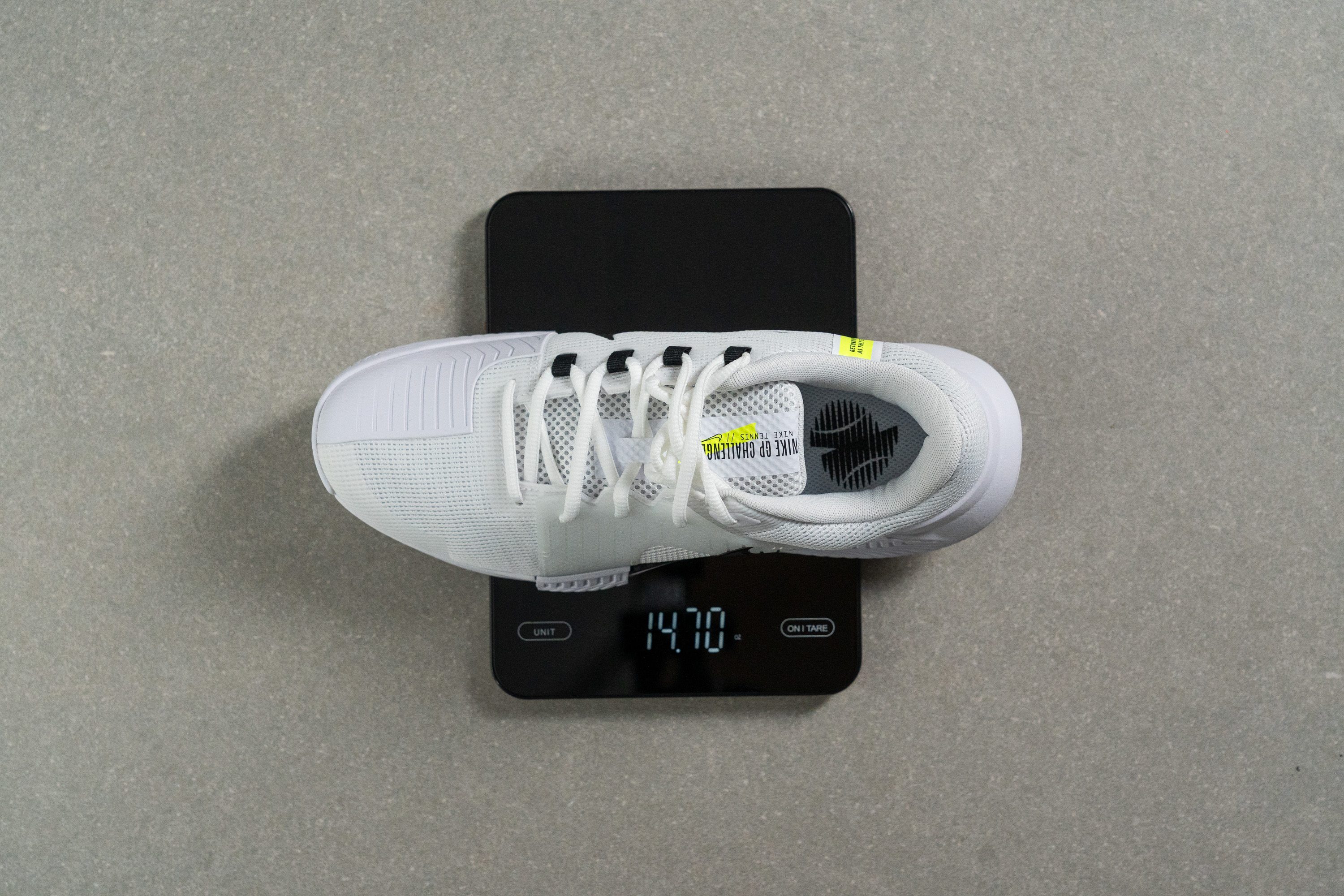
Weighing the shoe in a men's US size 9, we got 14.7 oz (417g). This is even heavier than such highly stable and cushioned shoes like:
- ASICS Court FF 3 (14.3 oz/406g)
- ASICS Gel Resolution 9 (13.8 oz/392g)
- Adidas Barricade 13 (13.4 oz/378g)
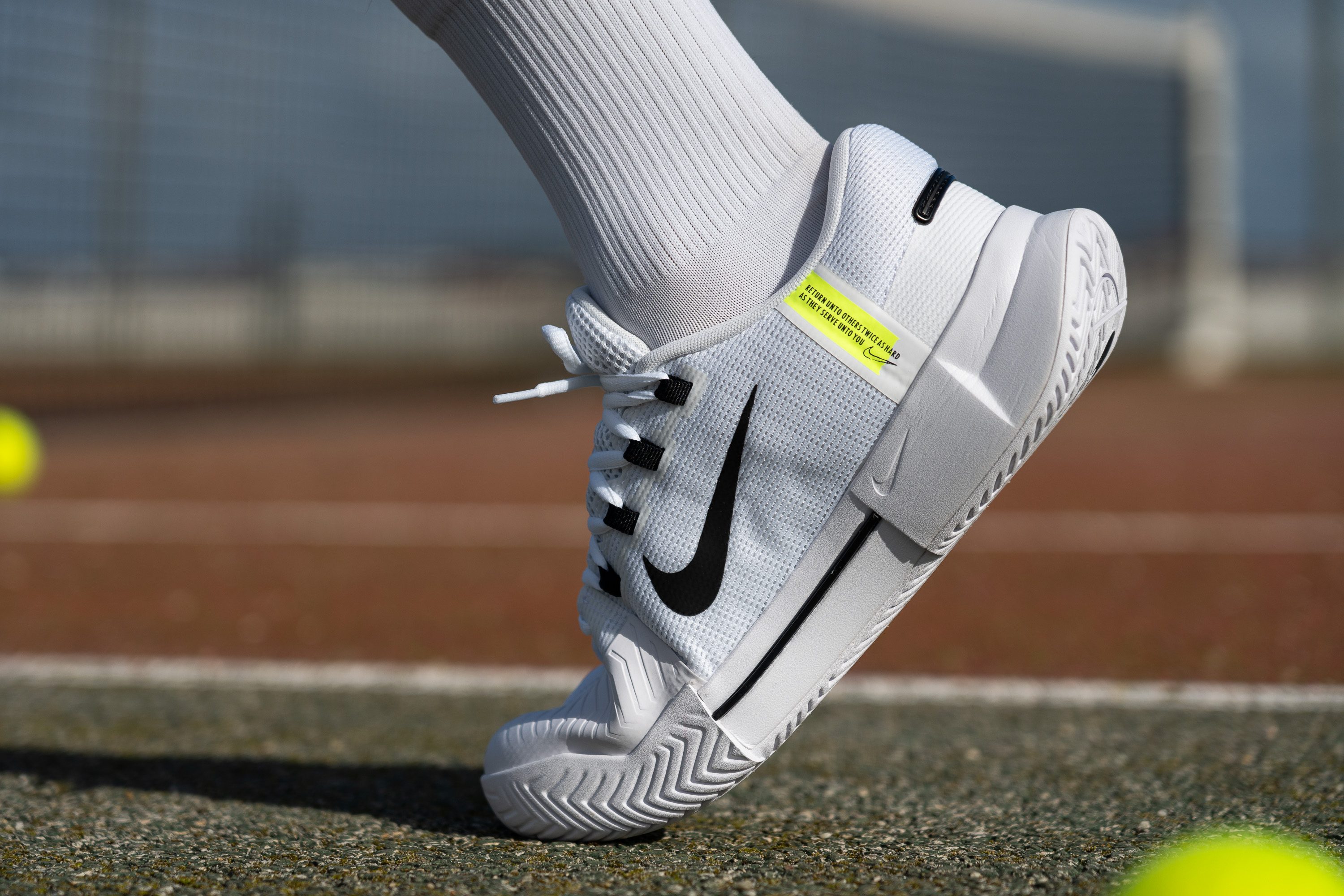
But on the bright size, it doesn't feel as heavy on the foot thanks to its bouncy cushioning and propelling shank.
| Zoom GP Challenge 1 | 14.7 oz (417g) |
| Average | 12.8 oz (362g) |
Breathability
The GP Challenge 1 features a plush and well-padded upper. It feels very cosy against the foot but, unfortunately, detracts from the shoe's ventilation capacity.
Towards the end of our playtest, we could feel some of the heat and moisture being trapped inside the shoe. Thus, we cannot recommend it for playing in extra-warm climates.
To stack the Challenge 1 up against other tennis shoes, we used a smoke-pumping machine to assess its breathability. As you can see, most of the smoke passes through the tongue area while the toebox mesh lets the air out very reluctantly.
But the good news is that the mesh material on this shoe still allows for better airflow than many other tennis shoes.
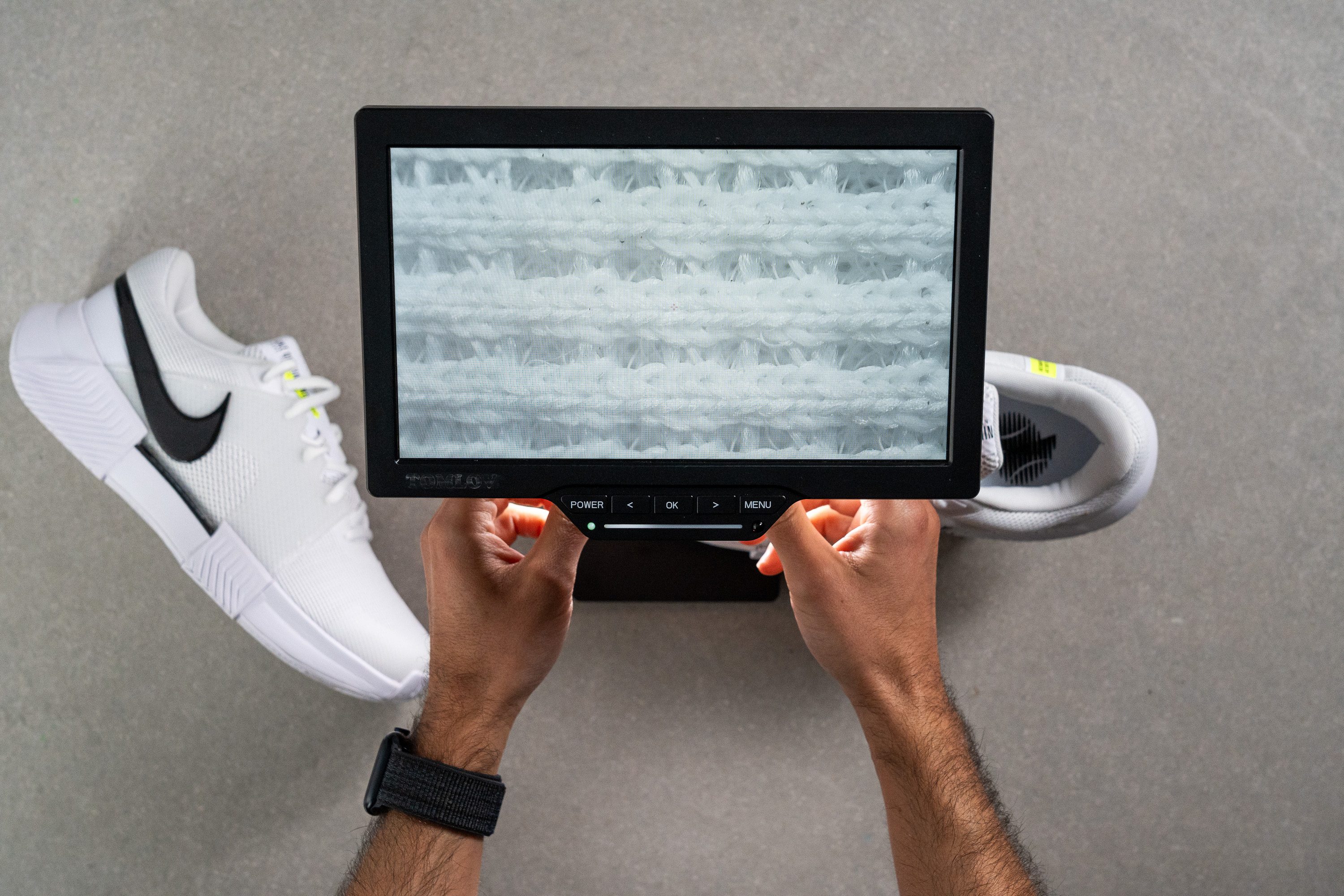
Using a microscope, we discovered that Nike uses a higher-quality mesh for the Challenge 1. It has a mix of thick and thin threads which work together to create a strong but porous coverage.
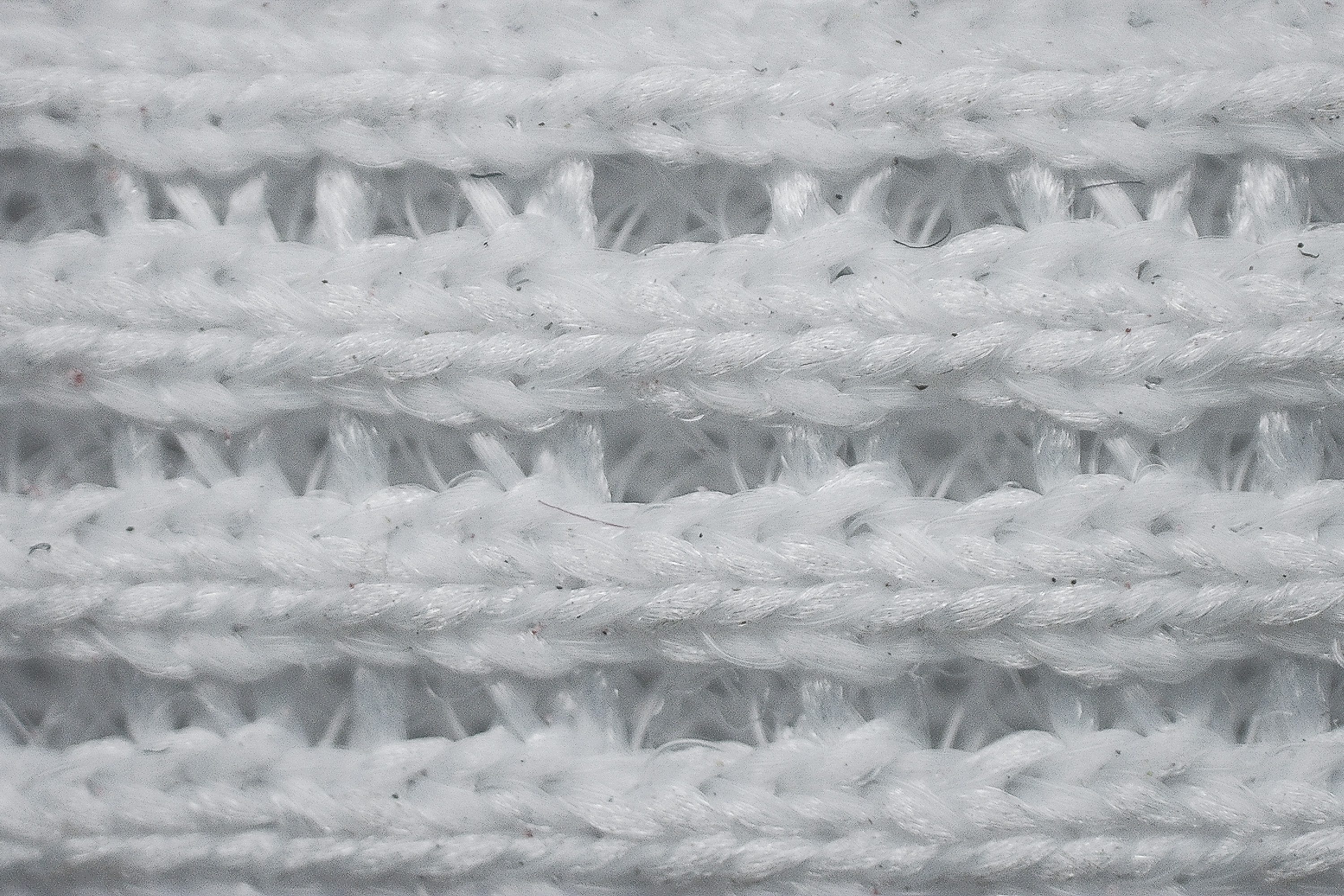
Even though it's not the most breathable tennis shoe we've tested (that would be ASICS Solution Speed FF 3), it provides decent ventilation like most tennis shoes on the market. On a 1-5 scale, where 5 is the most breathable, we rated it with a moderate 3.
| Zoom GP Challenge 1 | 3 |
| Average | 3.2 |
Stability
Lateral stability test
With its wide platform, rigid shank, and extra supportive overlays, the Nike GP Challenge 1 makes for a highly stable tennis shoe.
Its thick and steady platform also makes the shoe more of a baseline-ready option as opposed to a speedy all-court shoe.
Torsional rigidity
These days, tennis shoes rely on stiff TPU shanks to create a rigid and stable base.
The GP Challenge 1 features a rather wide and unforgiving shank in the midfoot which makes it practically impossible to twist the shoe. In our manual test, we rated its torsional rigidity with the highest possible score of 5 out of 5.
In addition to the shank, this Nike shoe also features TPU overlays to provide targeted support on the lateral side. Even the Swoosh is made of TPU in its model!
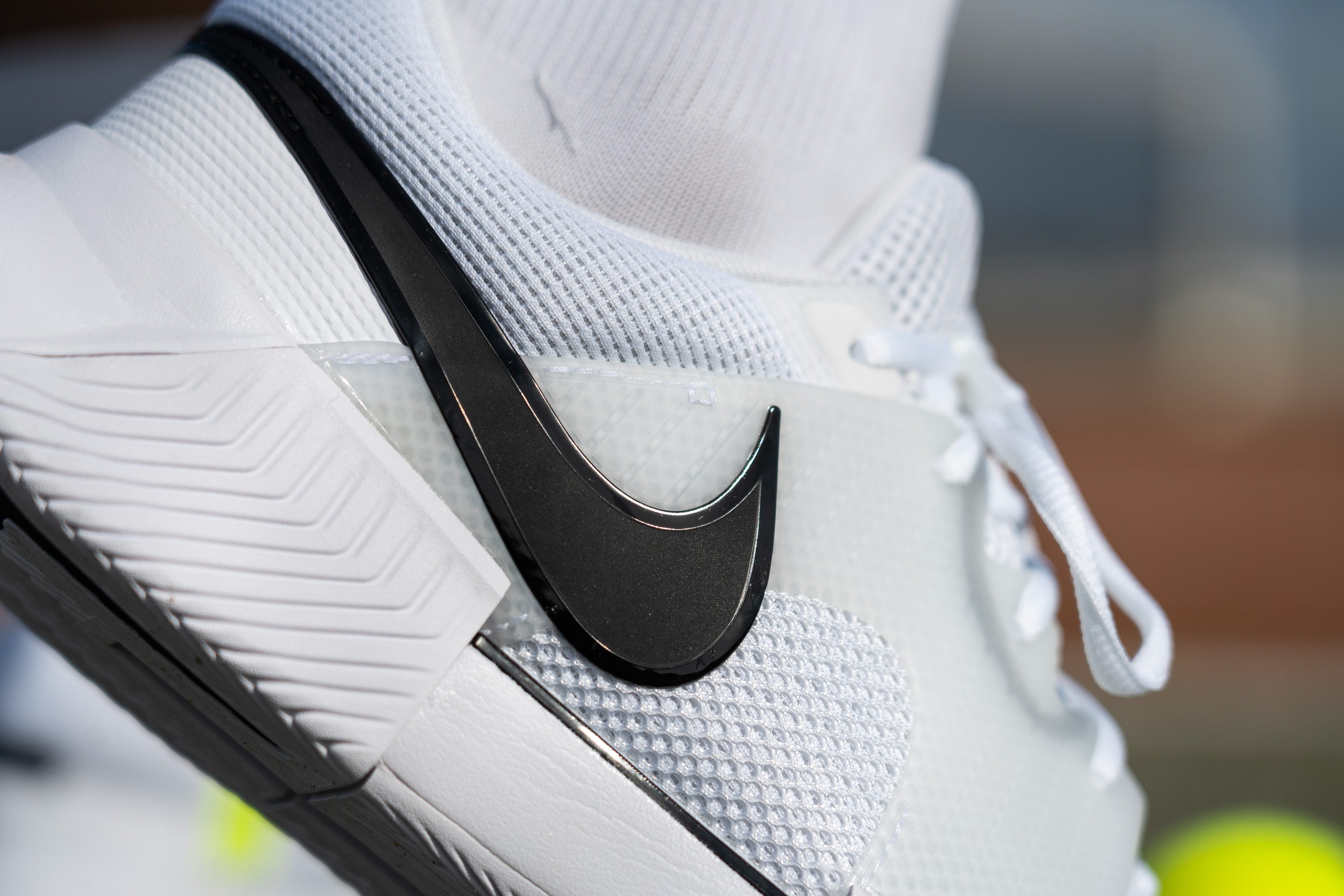
During our playtests, we never once felt as though the shoe would let our feet or ankles roll over the edge. Even when a lot of lateral pressure was applied on side-to-side movements.
| Zoom GP Challenge 1 | 5 |
| Average | 4.4 |
Heel counter stiffness
A stiff heel counter is another important component of a supportive tennis shoe.
Giving it a good push-an-squeeze, we rated the shoe's heel counter stiffness with a high score of 4. Add to that the incredible amount of collar padding and you get a nice and secure lockdown in the rearfoot.
No heel slippage or ankle shifting to be reported on our end.
| Zoom GP Challenge 1 | 4 |
| Average | 4.1 |
Midsole width - forefoot
Even though the outriggers are not as aggressively protruded on the Challenge 1 as they are on the Challenge Pro, the shoe's platform is still rather wide and steady.
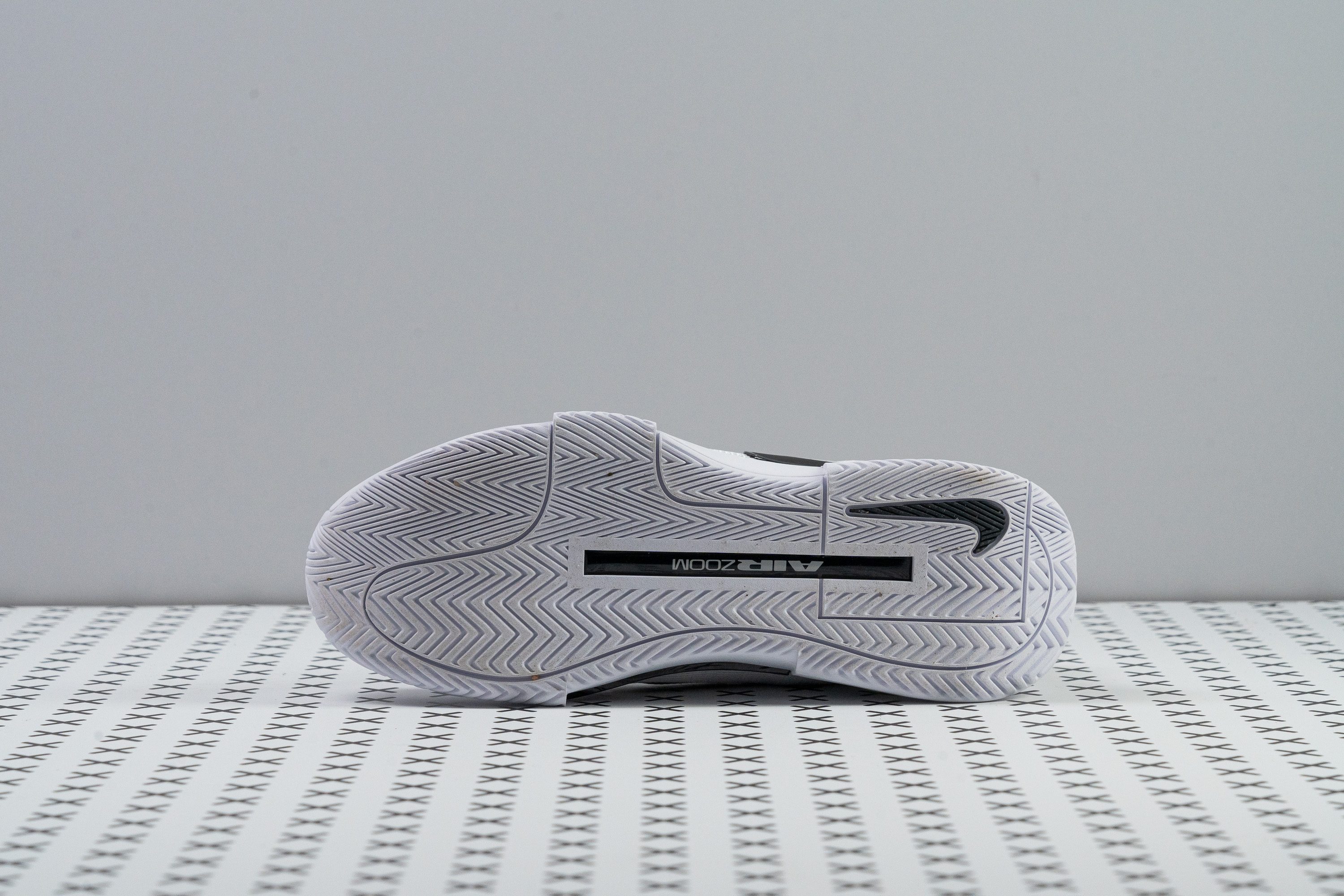
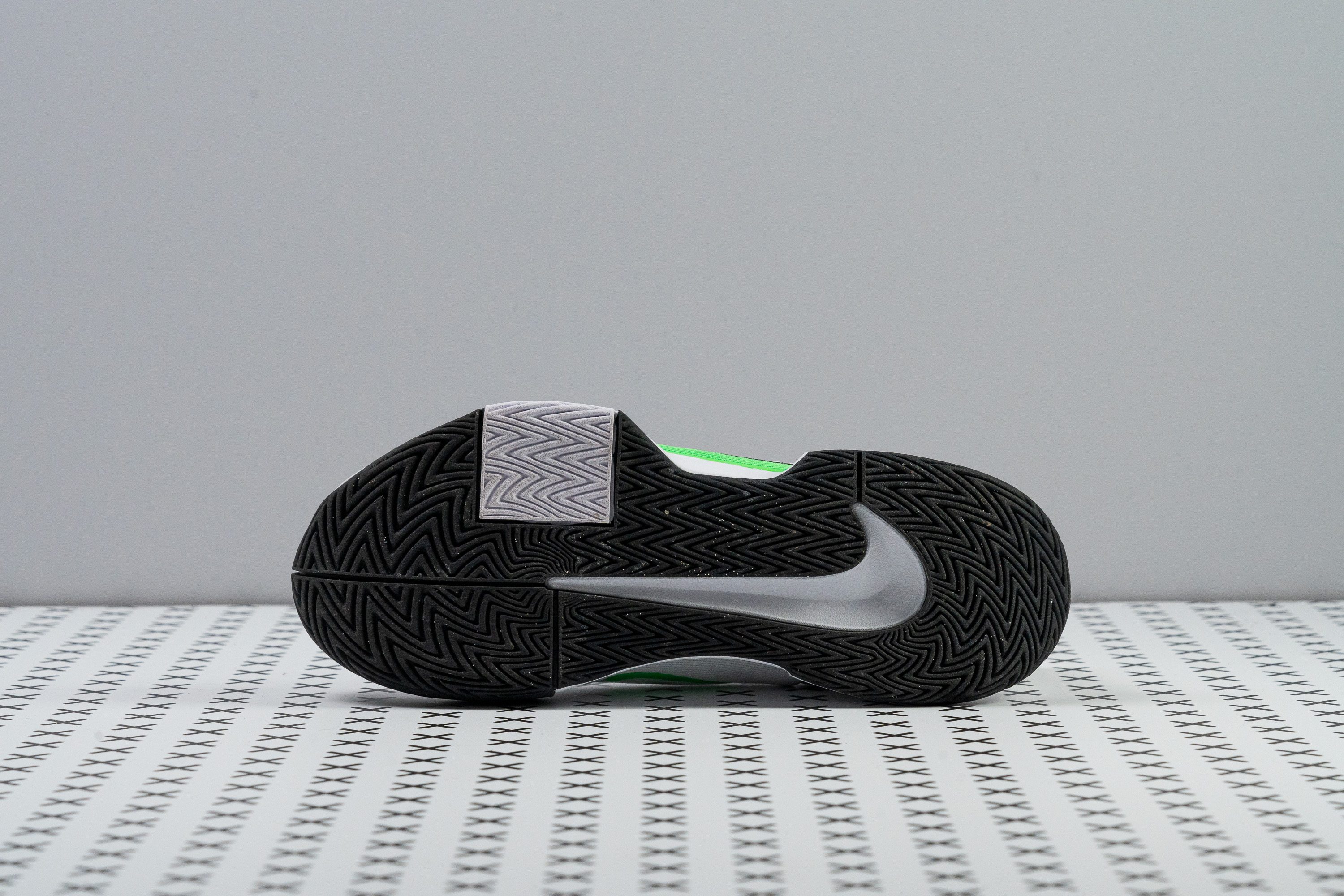
Measuring the widest part of the midsole on the Challenge 1, our calliper showed 112.0 mm which is exactly the same as the average. For comparison, the Challenge Pro measures at 115.8 mm.

| Zoom GP Challenge 1 | 112.2 mm |
| Average | 111.9 mm |
Midsole width - heel
In the widest part of the heel, both shoes have a similar width of 92.9 mm.
We have only good things to say about the platform width of the Challenge 1. No matter how aggressive our side shifts were or what angle our foot landed at, the shoe was always there to make us feel planted.
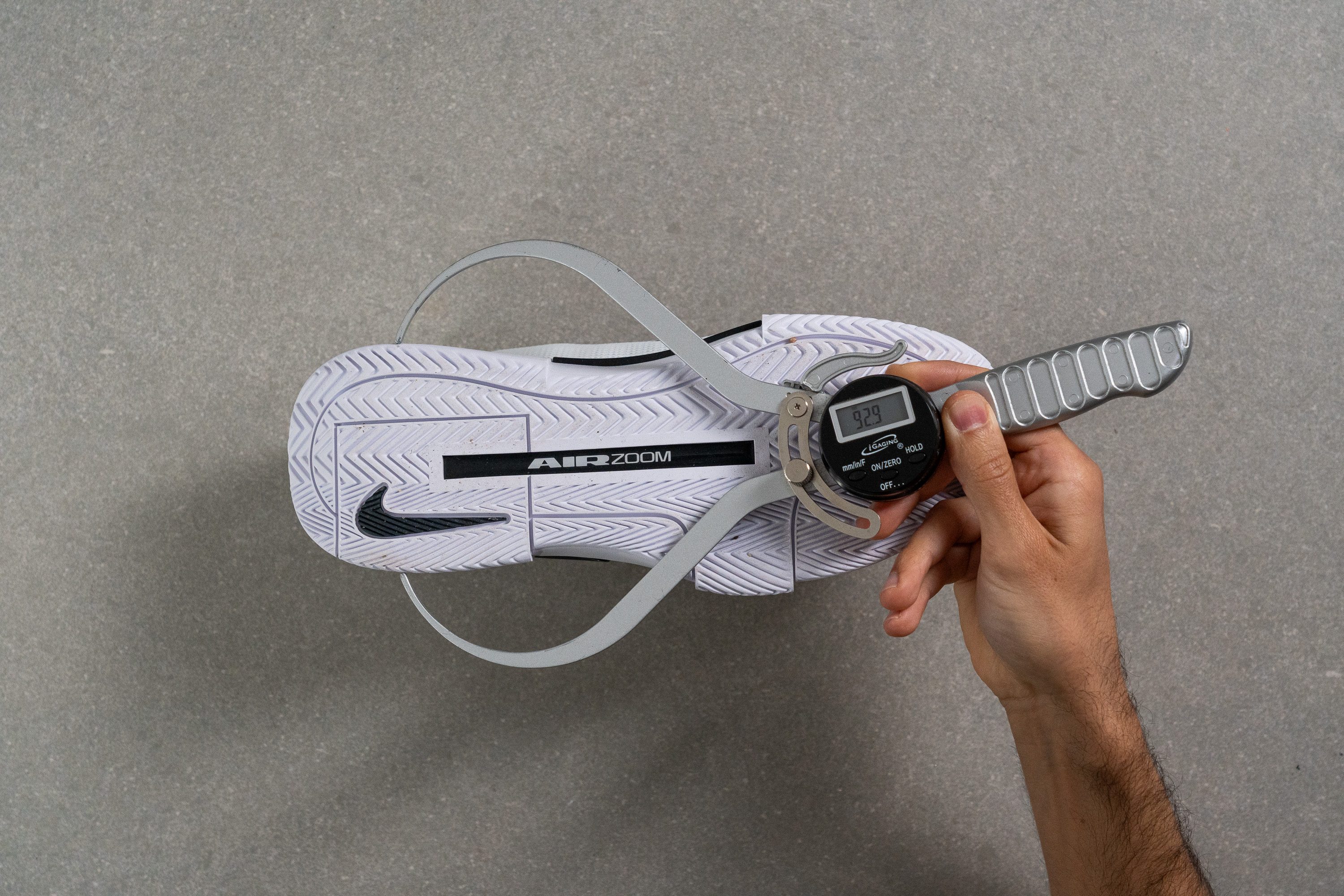
| Zoom GP Challenge 1 | 92.9 mm |
| Average | 89.6 mm |
Durability
Toebox durability
We are happy to see that the GP Challenge 1 has extra protection in the most high-wear areas, especially the toe drag guard on the medial side.
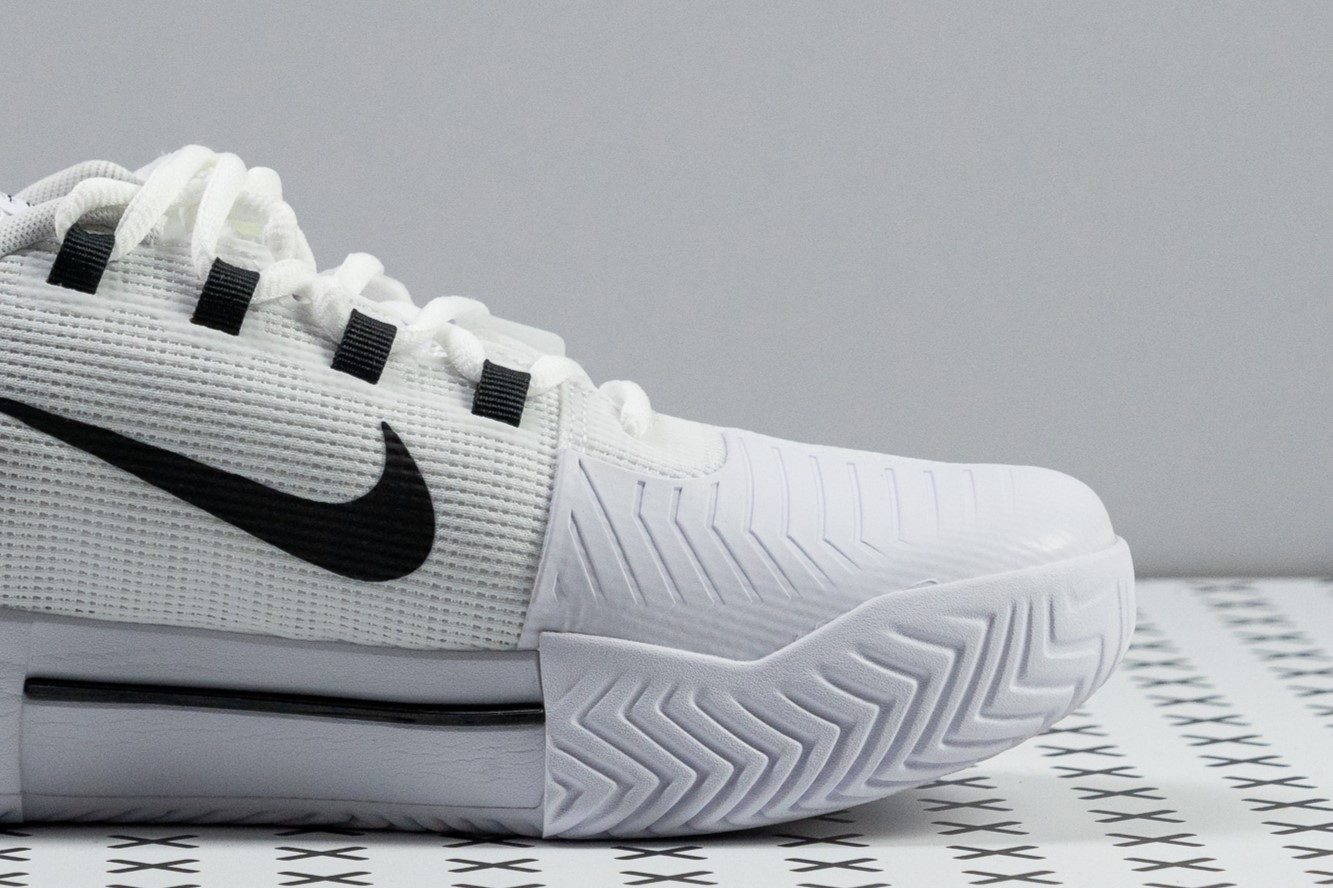
But here is the caveat, if you happen to slash the shoe's exposed mesh against the court, it is not going to survive that long.
We turned to a Dremel with a sandpaper tip, set its speed to 5K RPM, and held the tool against the shoe's toebox for 12 seconds. For the record, the pressure remained consistent as well at 3.2N.
This is our way of mimicking dozens of toe drags on the court.
Given that the Dremel left a nearly see-through hole in the fabric, we couldn't rate the shoe's toebox durability any higher than 3 out of 5.
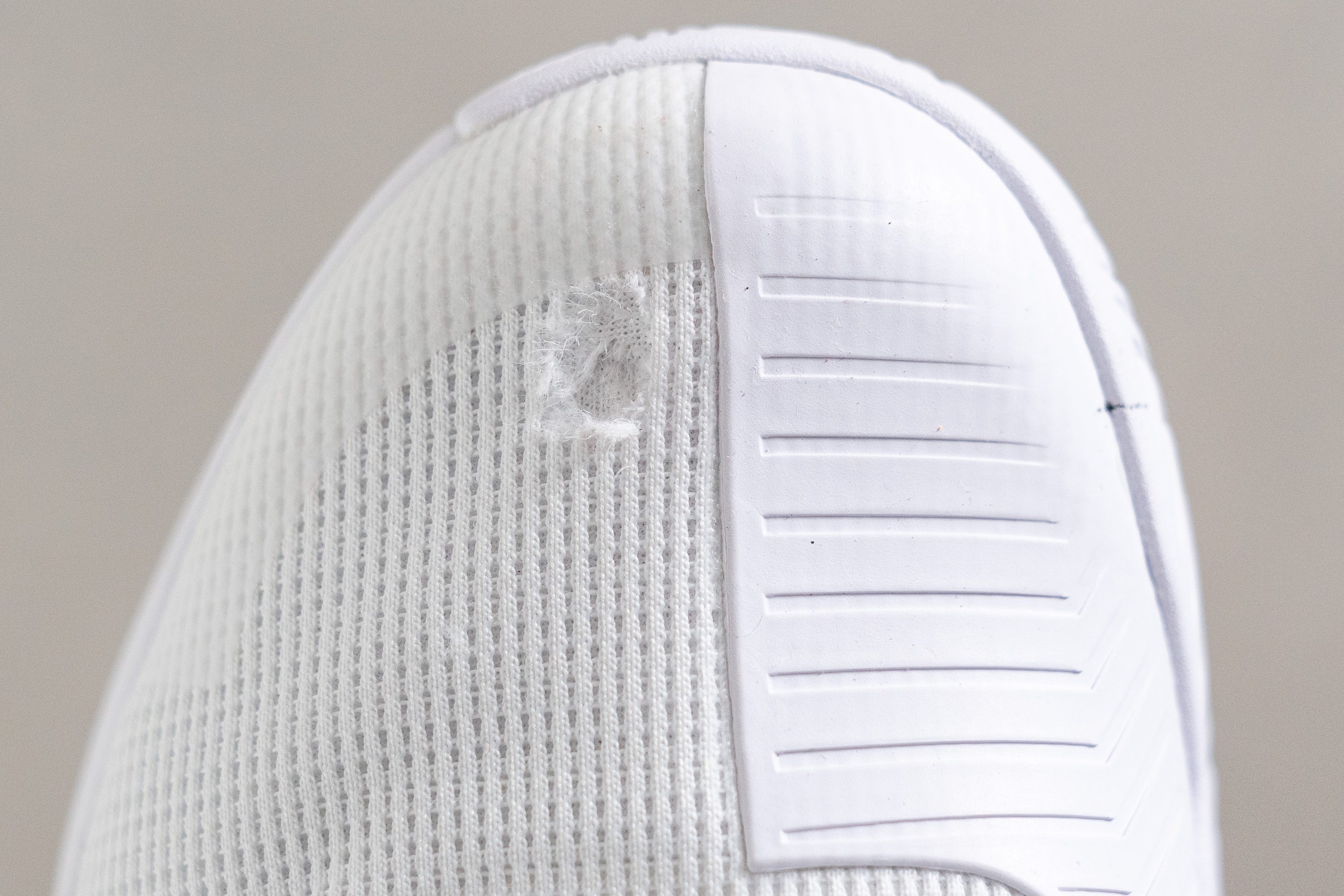
For comparison, here is how much toebox protection is resent on the ASICS Resolution 9!
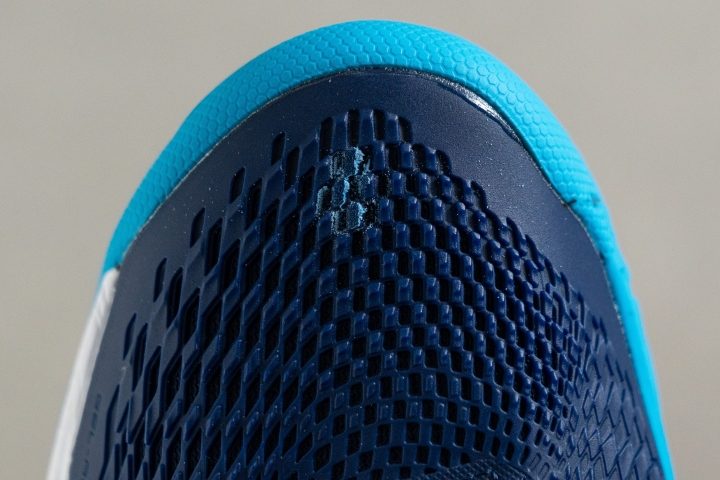
ASICS Resolution 9
Another area of concern is the shoe's exposed fabric eyelets. Knowing how much toll regular toe drags can take on the medial side, we are surprised that a £160 shoe could not afford extra reinforcement in this area.
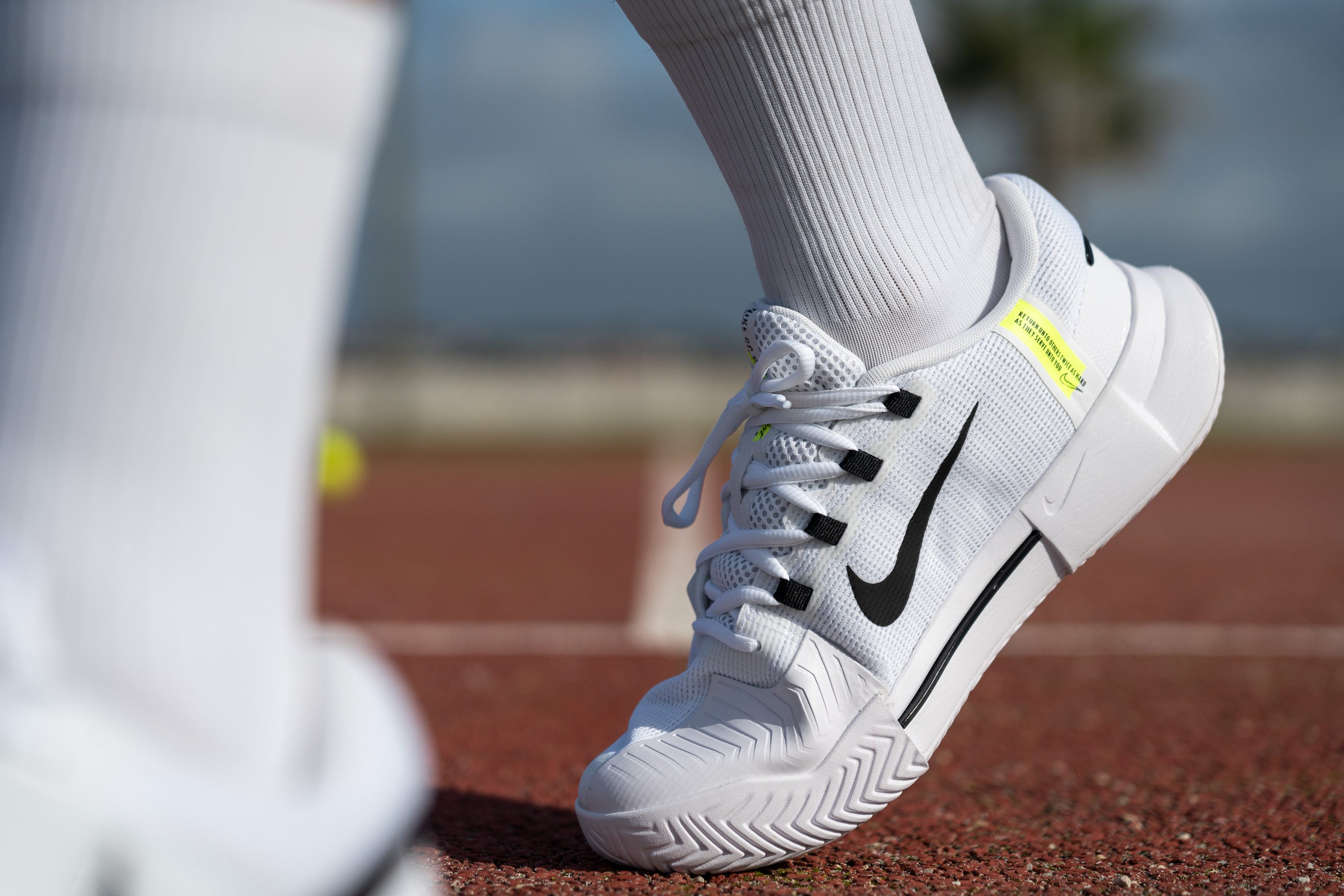
| Zoom GP Challenge 1 | 3 |
| Average | 3.7 |
Heel padding durability
The interior lining of the GP Challenge 1 features a rather delicate mesh as well.
After only 4 seconds of applying our Dremel to the inner side of the shoe's heel collar, the tear was rather obvious.
This is surprising given that the cheaper version of this shoe (the Challenge Pro) did much better on the same test.
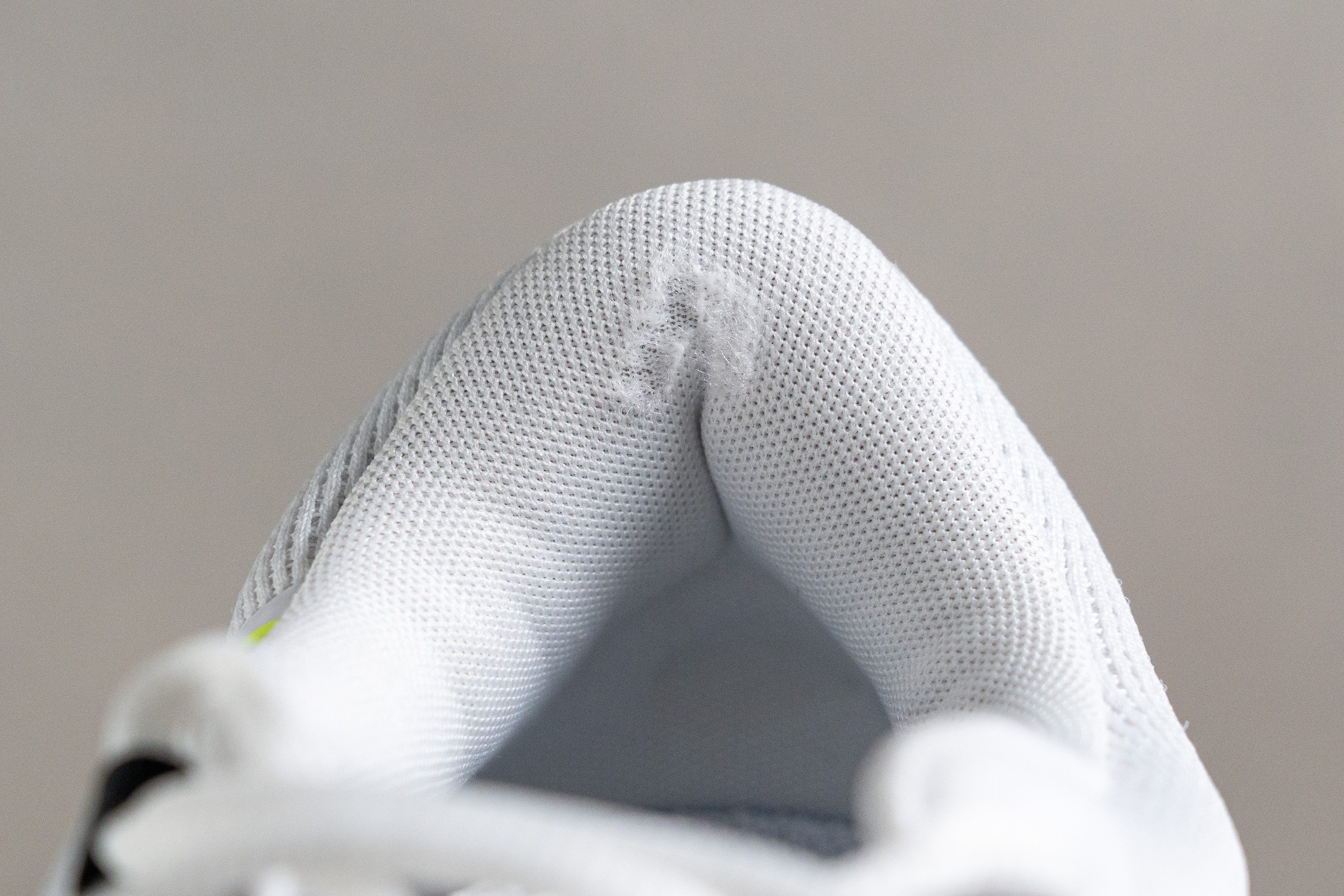
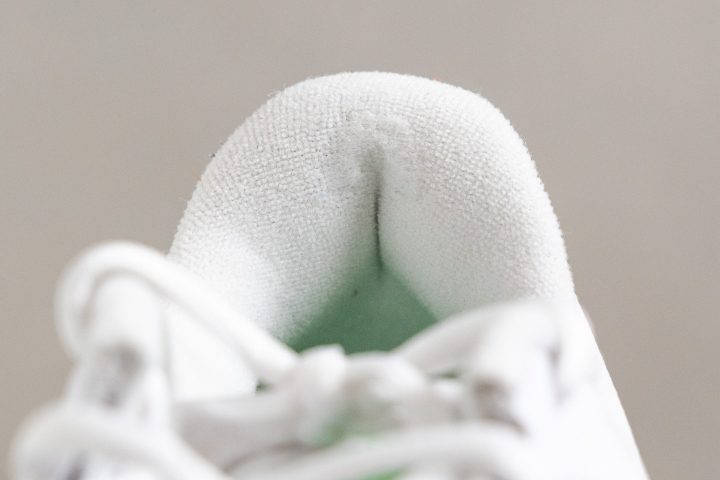
Not sure why Nike didn't use the same type of tear-resistant fabric on the more expensive version. We lowered the heel padding durability score for the Challenge 1 to only 3 out of 5.
| Zoom GP Challenge 1 | 3 |
| Average | 3.3 |
Outsole hardness
Looks like Nike uses the same type of hard rubber for the Challenge 1 as it did in its other tennis shoes.
Pressing our durometer against it returned 87.3 HC which is the same result as we got in the Nike Vapour shoes. And this is good news considering how happy we were with the outsole durability of those shoes.
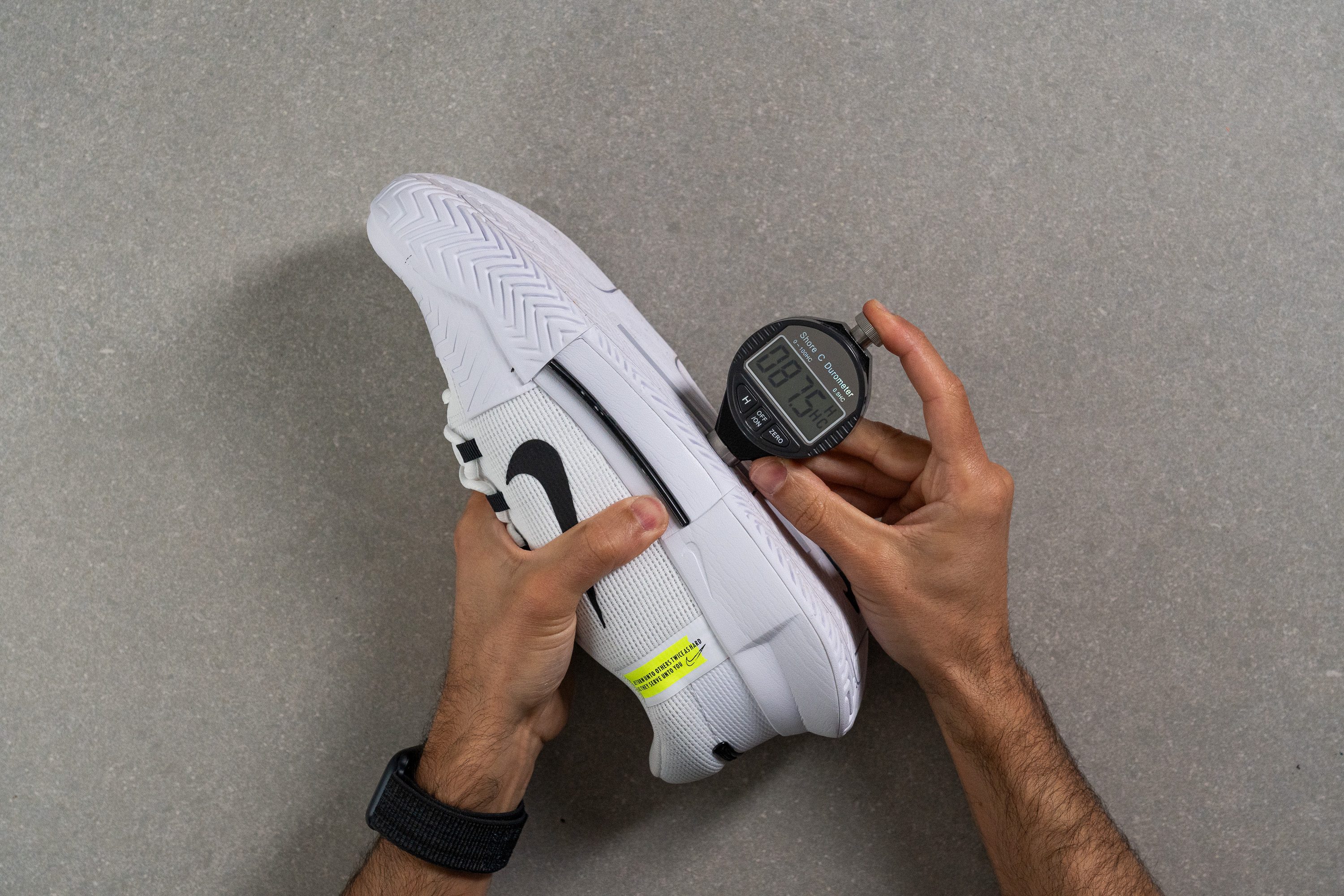
| Zoom GP Challenge 1 | 87.3 HC |
| Average | 86.0 HC |
Outsole durability
To put the shoe's outsole through its paces, we turned up the speed on our Dremel to the relentless 10K RPM. We also held its tip against the rubber for a longer period of 22 seconds.
We are happy to report that the rubber has met our expectations as the tool merely scuffed the surface of the outsole.
According to our tread gauge measurement, the dent is only 0.7 mm deep which is the category average.
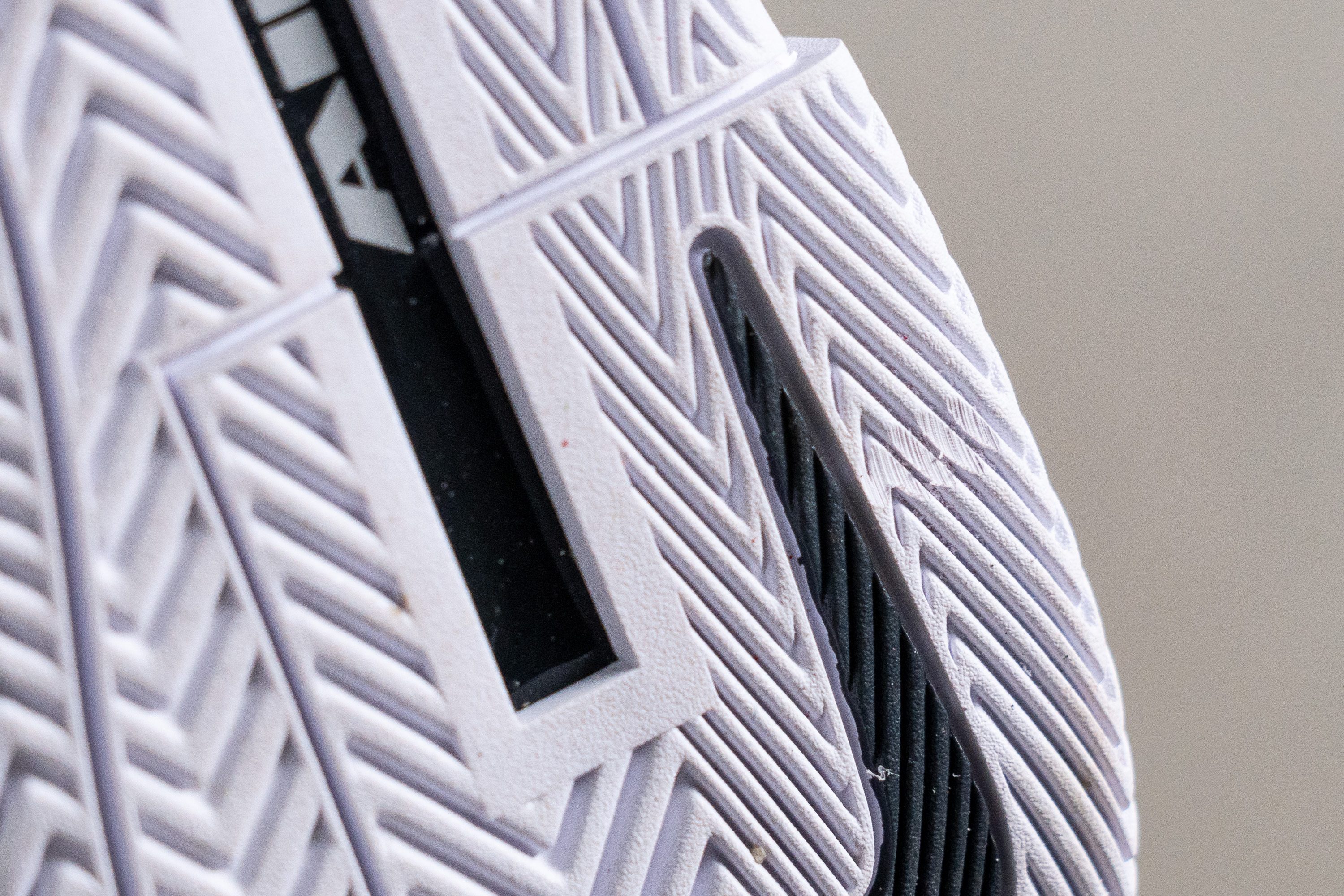
| Zoom GP Challenge 1 | 0.7 mm |
| Average | 0.8 mm |
Outsole thickness
Even though there is no durability warranty for the outsole of this Nike shoe, we are not at all concerned with its longevity.
With an outsole thickness of 4.5 mm, the Challenge 1 has more than enough rubber to last longer than most tennis shoes.
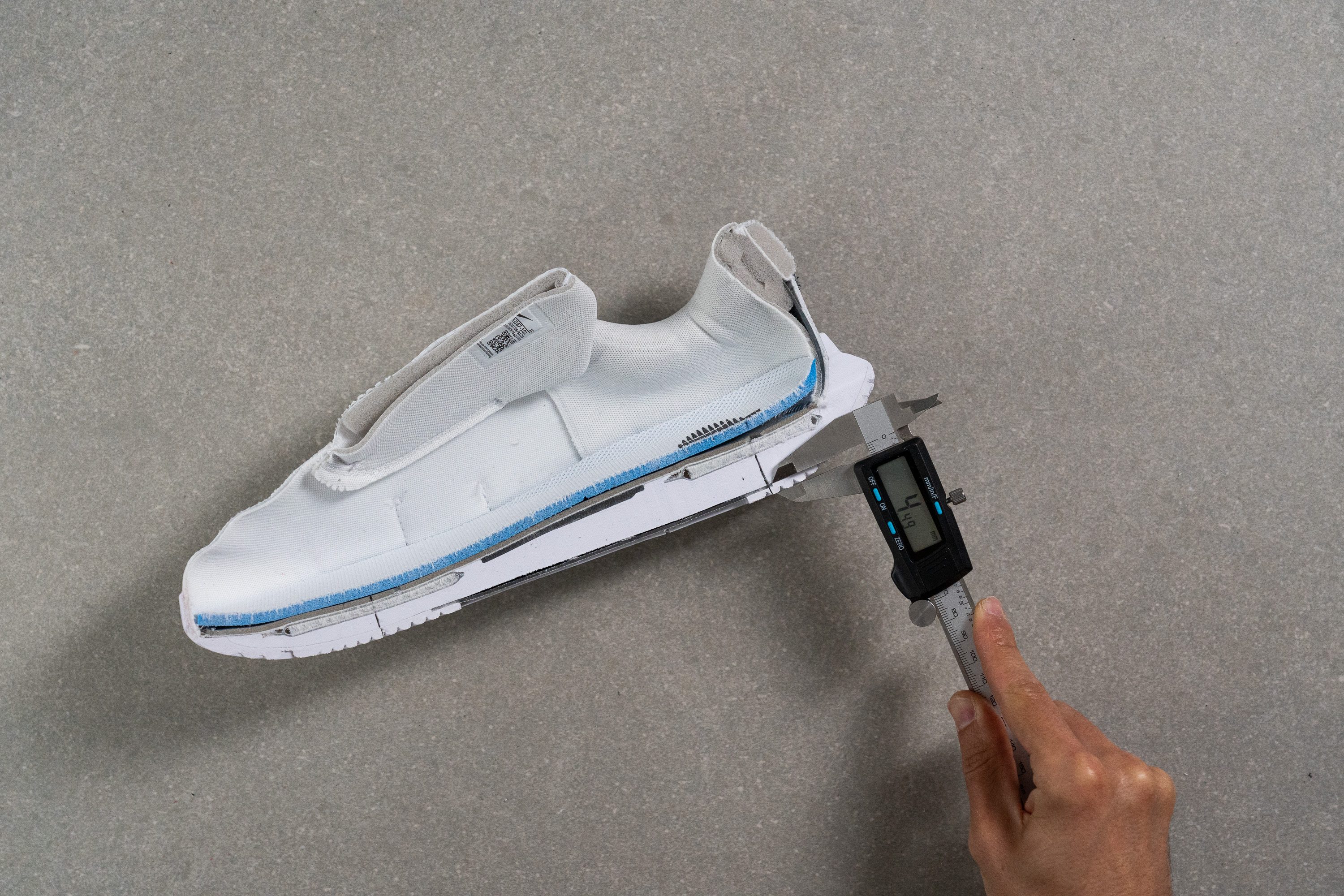
| Zoom GP Challenge 1 | 4.5 mm |
| Average | 4.2 mm |
Misc
Insole thickness
The shoe's insole is sufficiently padded at 4.5 mm in the heel. It is slightly thinner than average but provides a good buffer from the stiff TPU shank which is placed right under the midfoot.

| Zoom GP Challenge 1 | 4.5 mm |
| Average | 5.1 mm |
Removable insole
If you need to level up the comfort of your tennis shoes with a pair of custom orthotics, you can easily remove the shoe's stock insole.
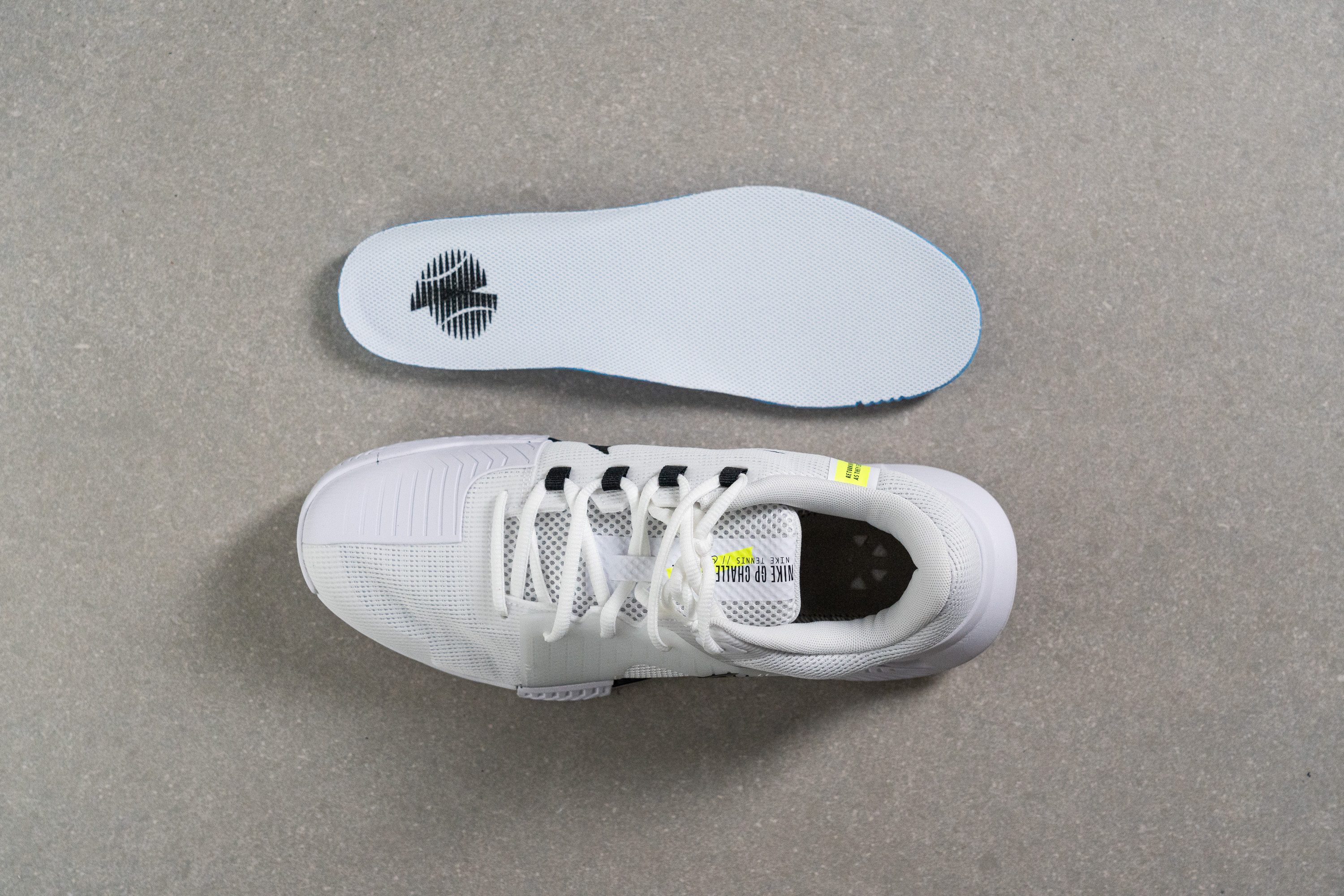
| Zoom GP Challenge 1 | Yes |
Tongue padding
There is also not as much tongue padding in the Challenge 1 as we saw in the Challenge Pro. But at 7.9 mm, it is just the same as the average. And it buffered the lace pressure pretty well.

| Zoom GP Challenge 1 | 7.9 mm |
| Average | 8.1 mm |
Tongue: gusset type
We wish the GP Challenge 1 went for the same tongue design as in the Challenge Pro (which is gusseted).
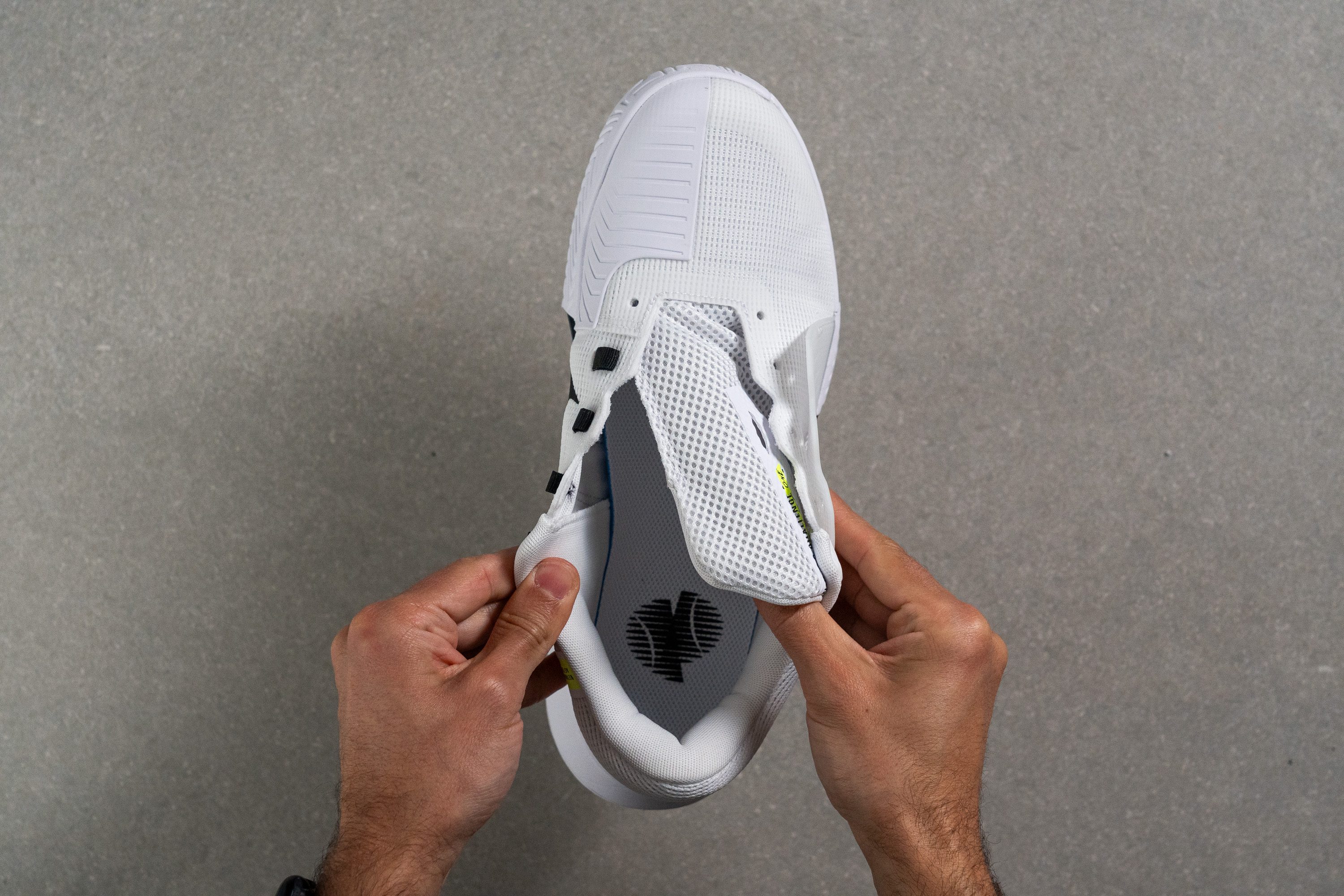
This tongue is a bit more fiddly as there are no attachments on the sides and it shifts around when lacing up the shoe.
It's not horrible but we think that Nike could do better.
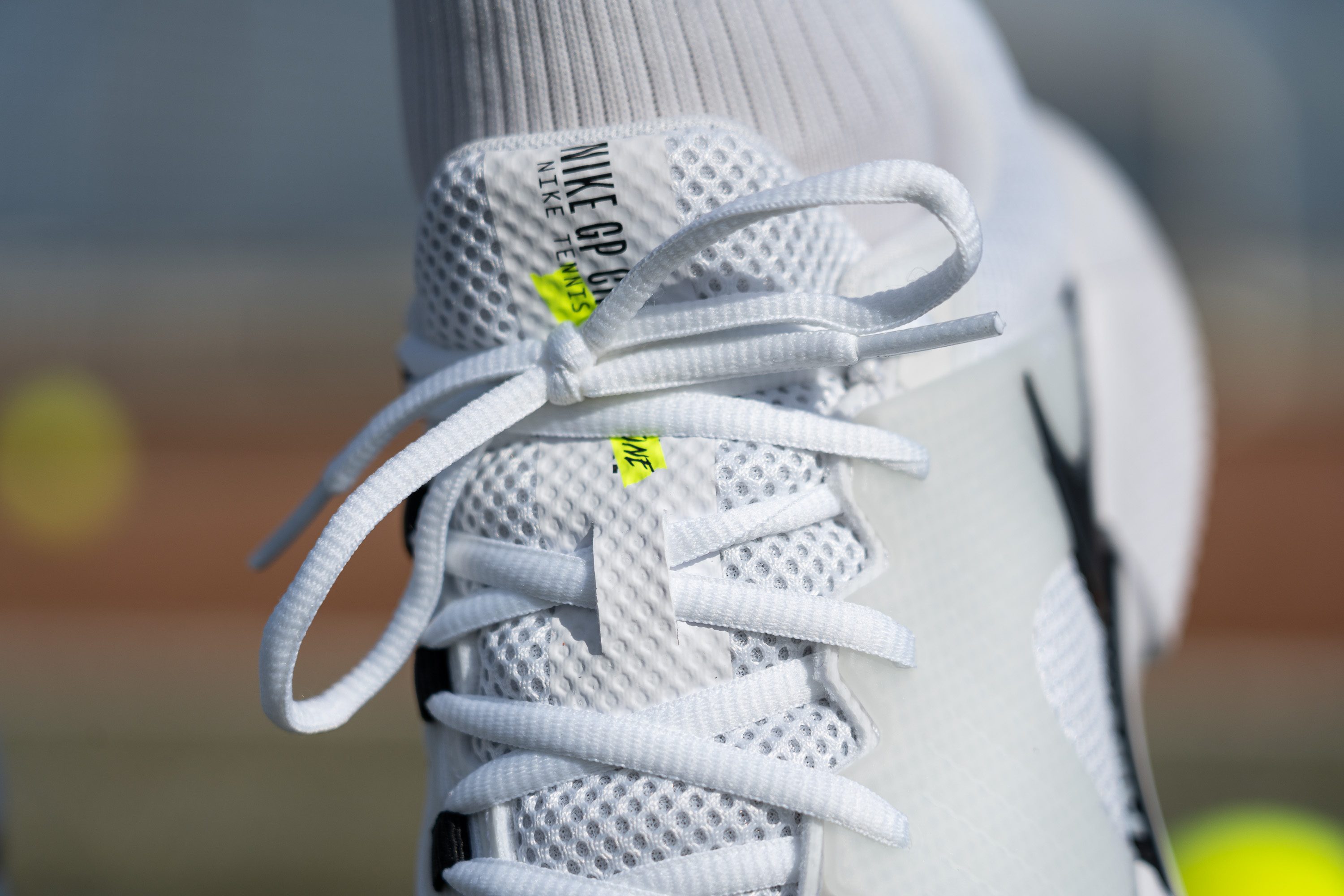
| Zoom GP Challenge 1 | None |
Heel tab
The Challenge 1 has no pull tabs or loops to hold onto when putting the shoe on. However, it comes with a very convenient U shape of the collar which makes it very easy to slide right into the shoe.
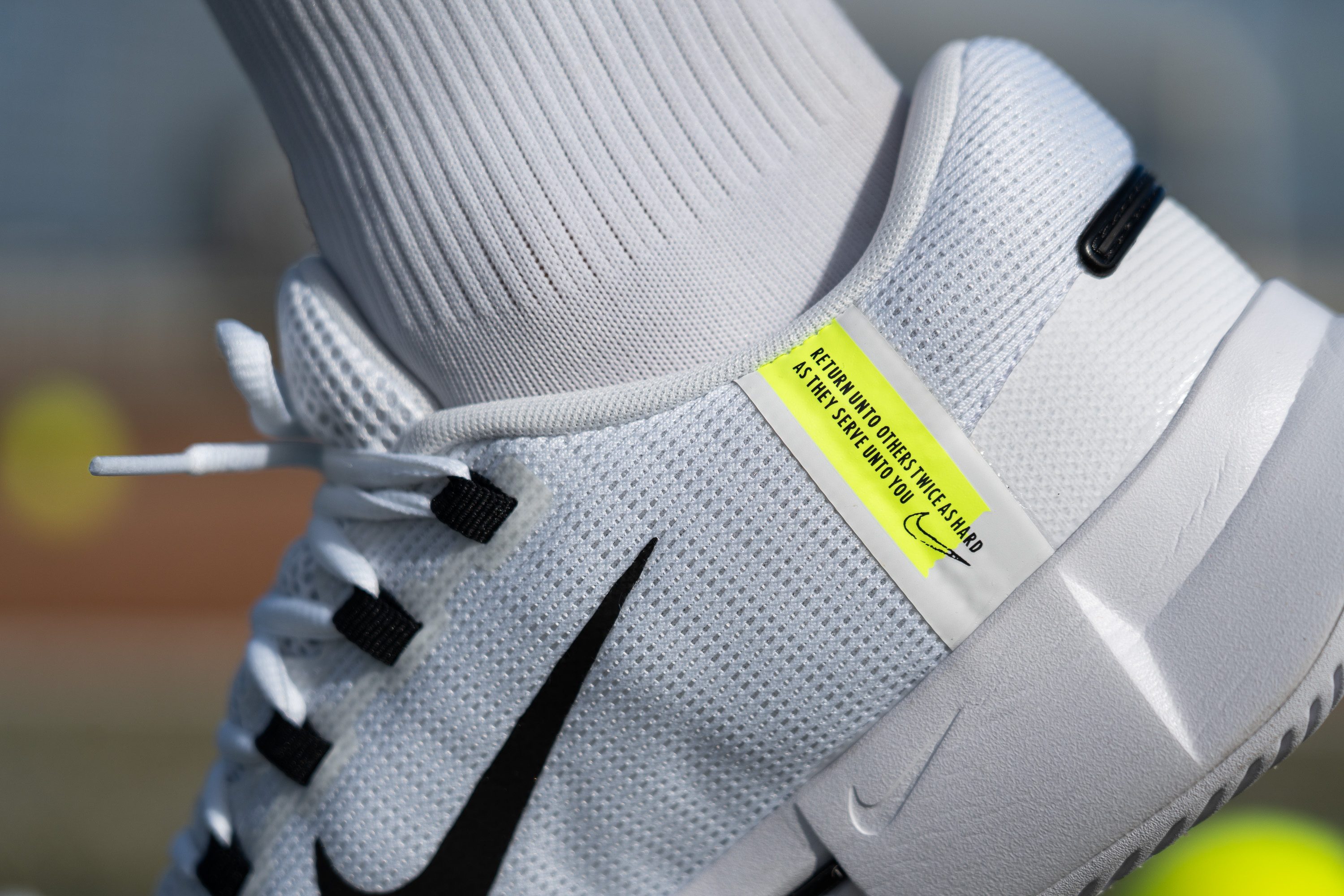
| Zoom GP Challenge 1 | None |

